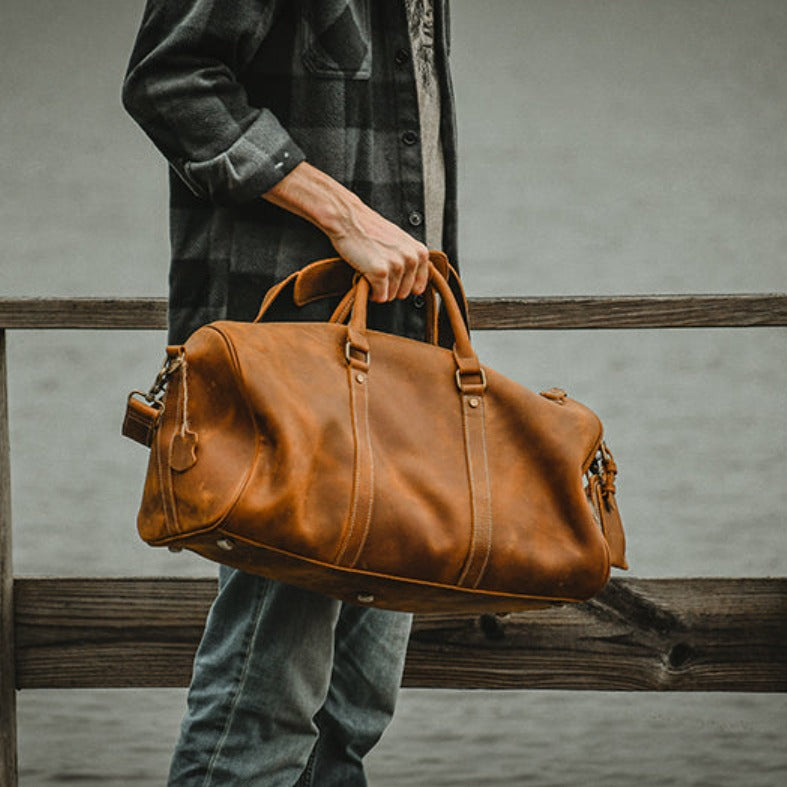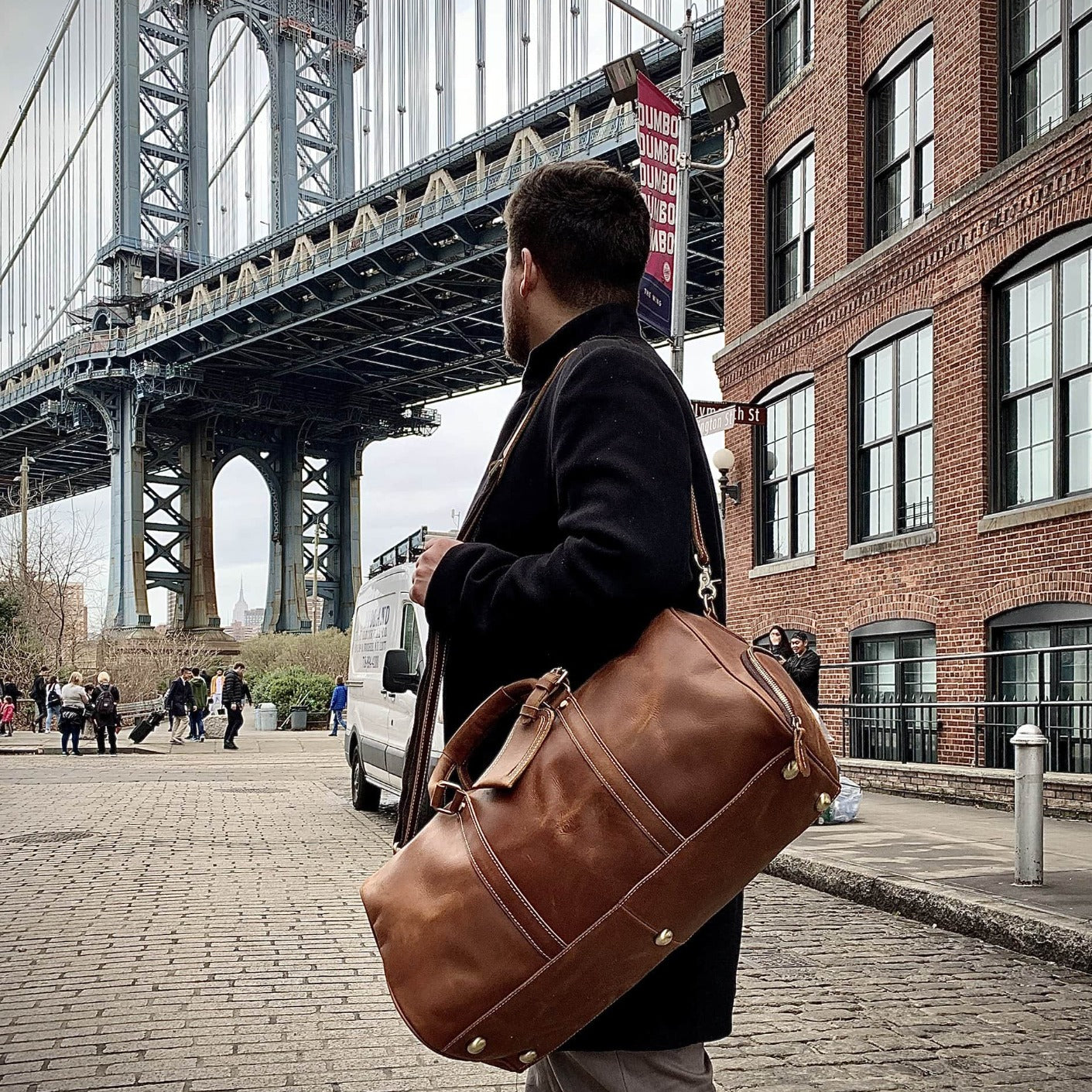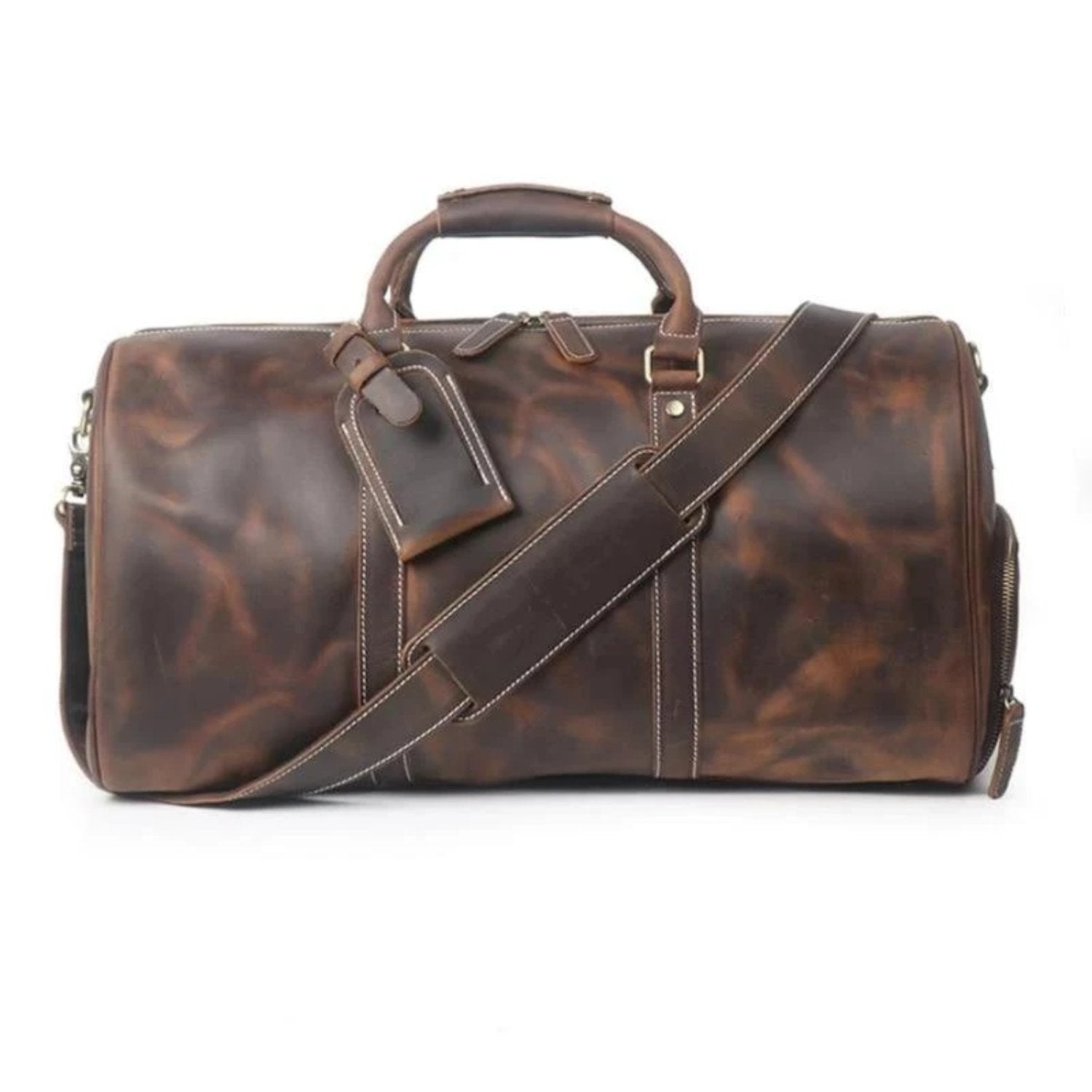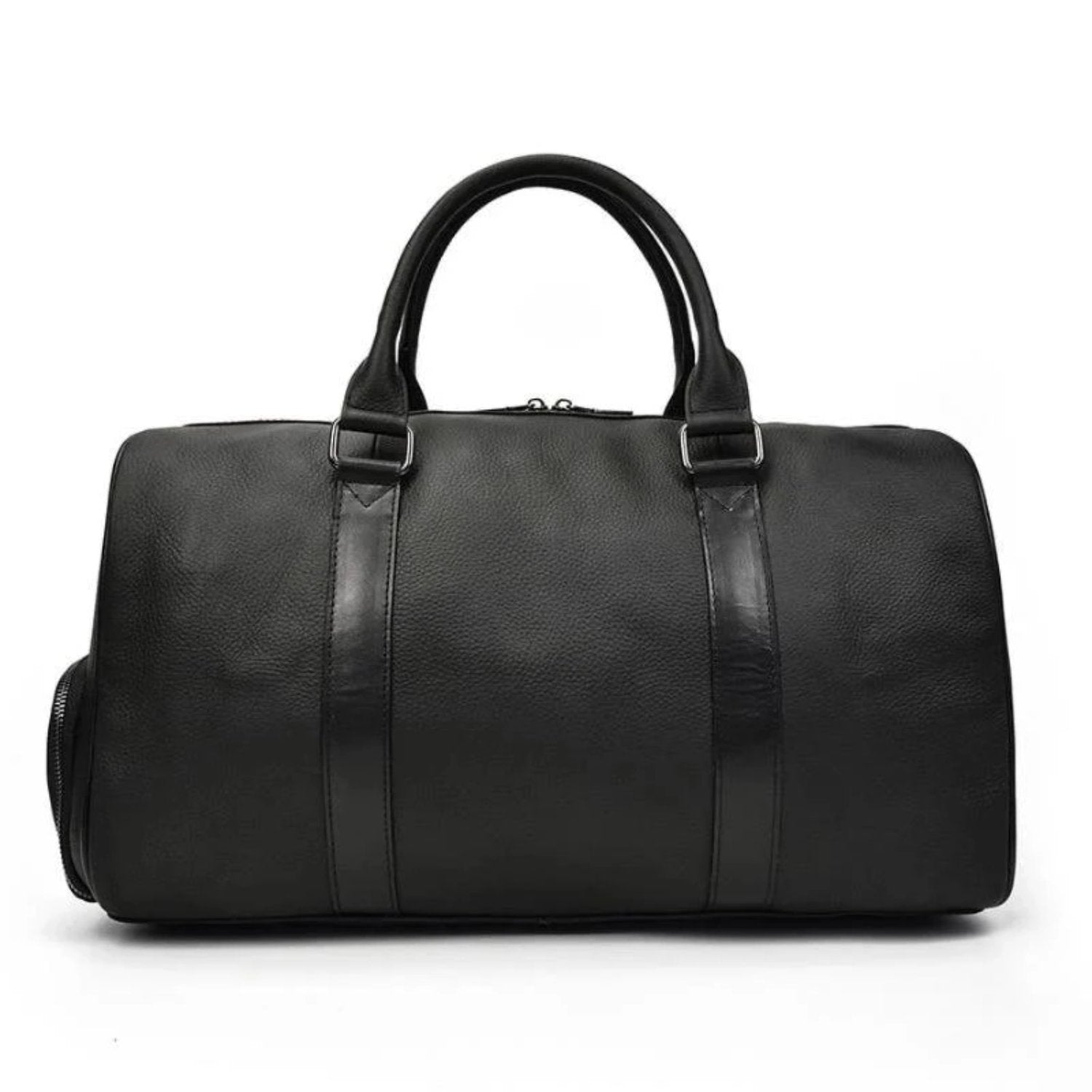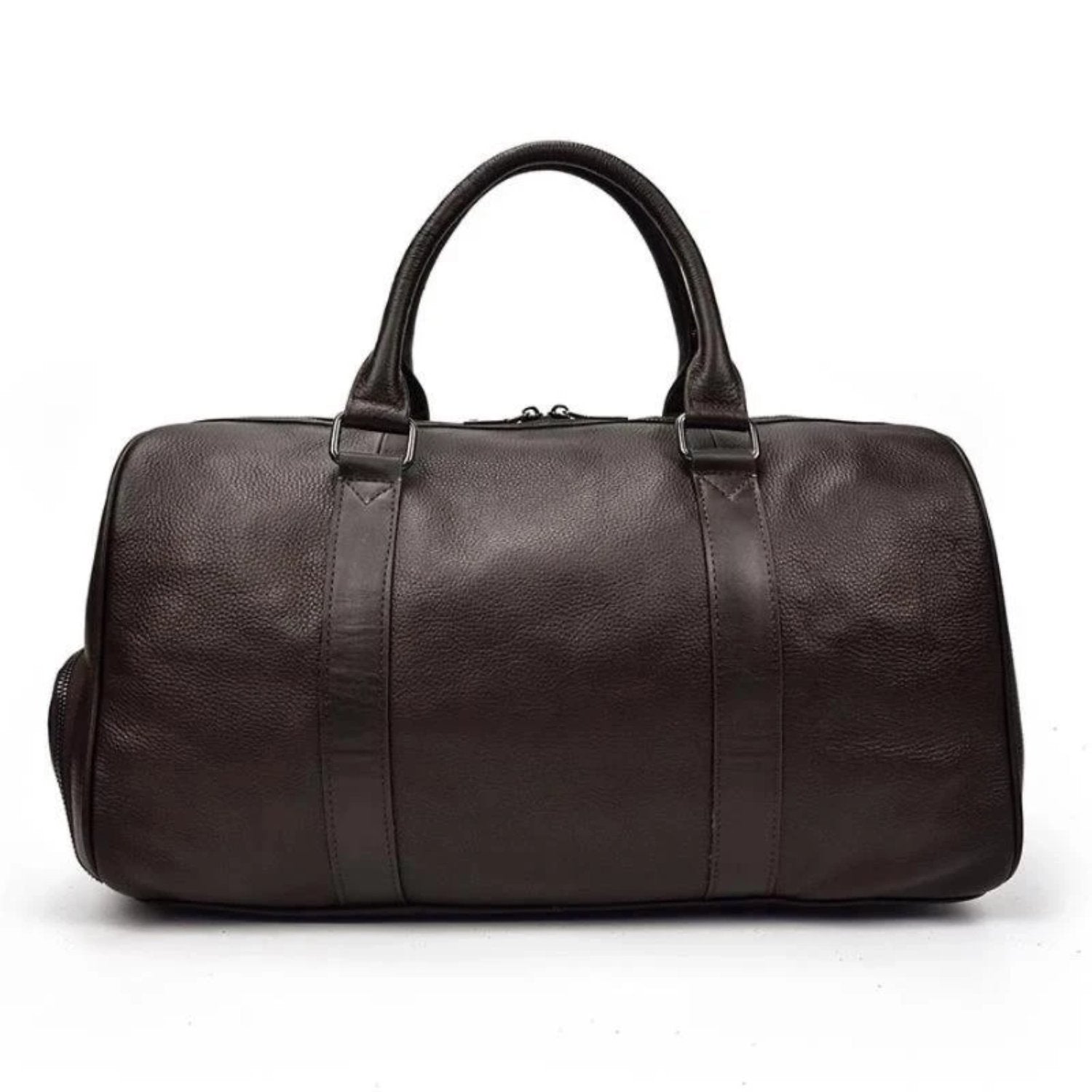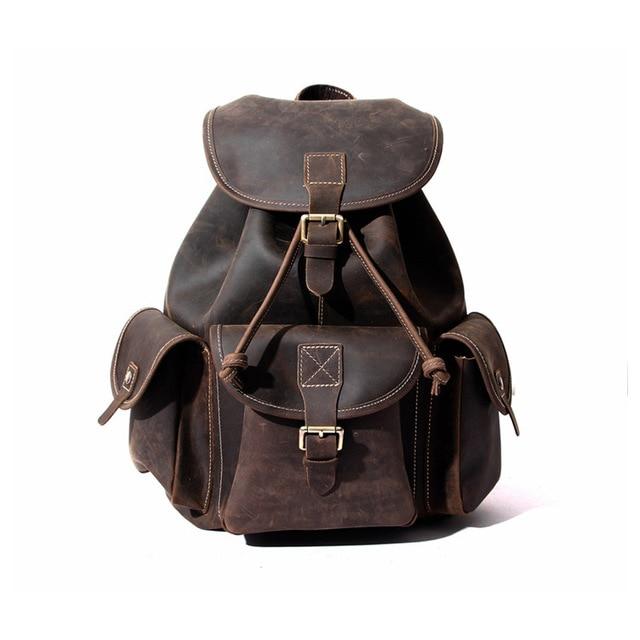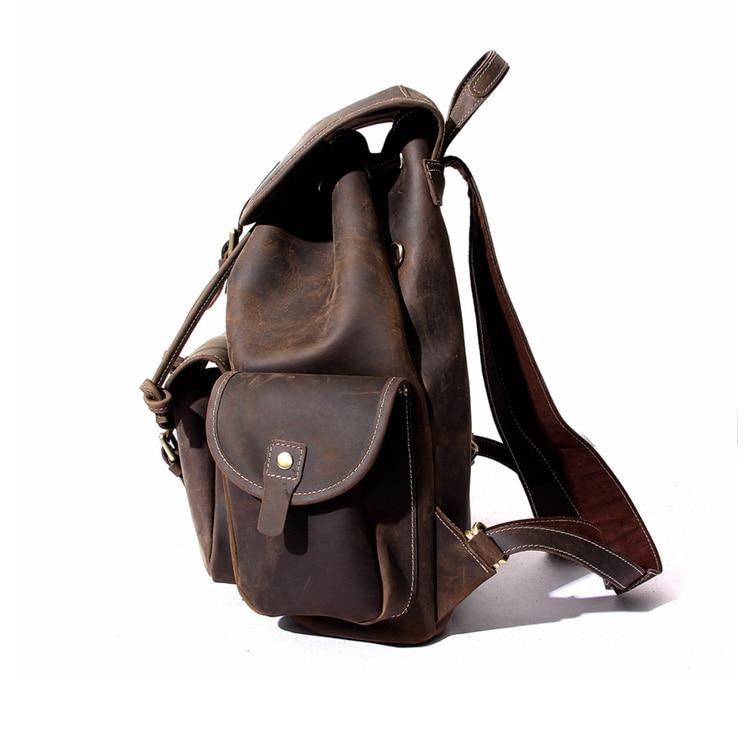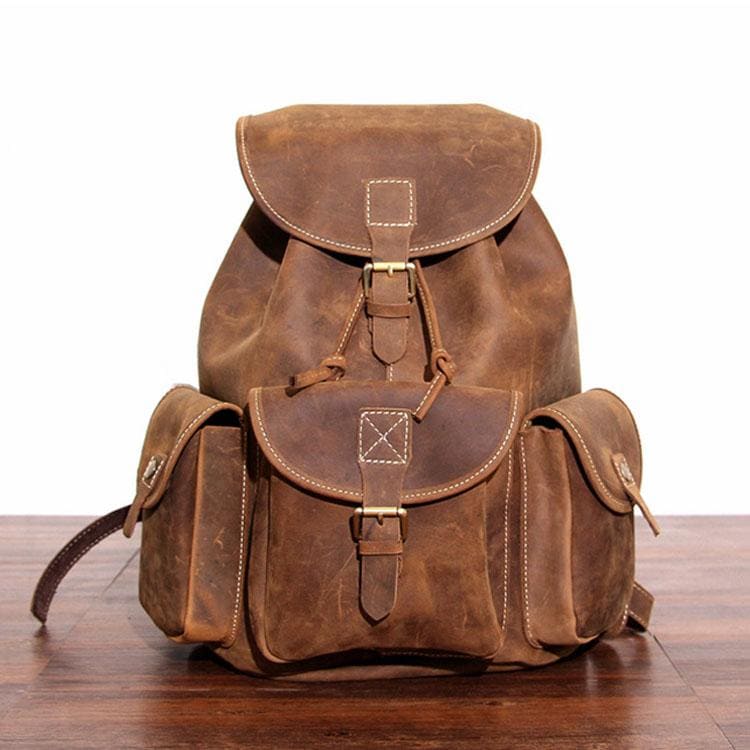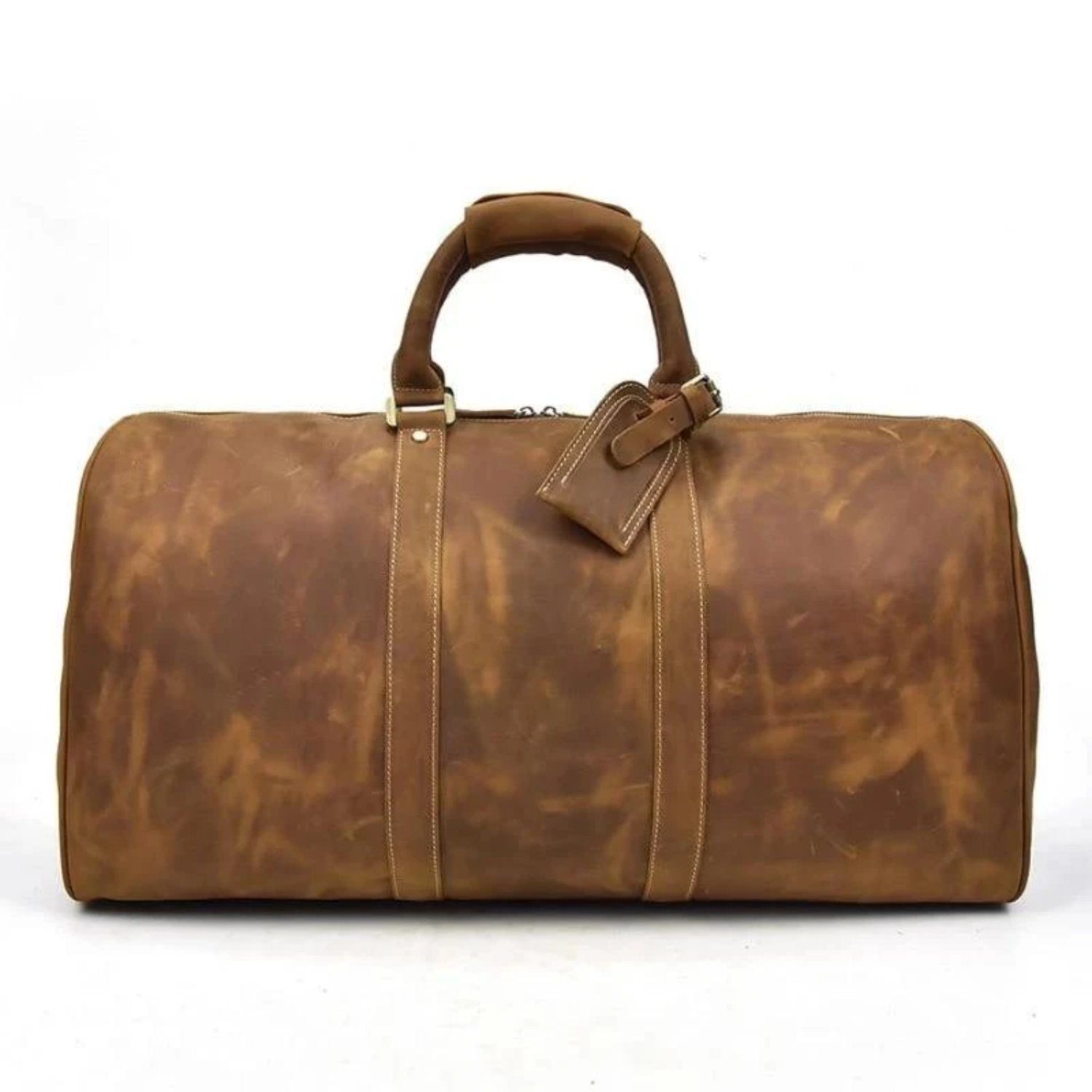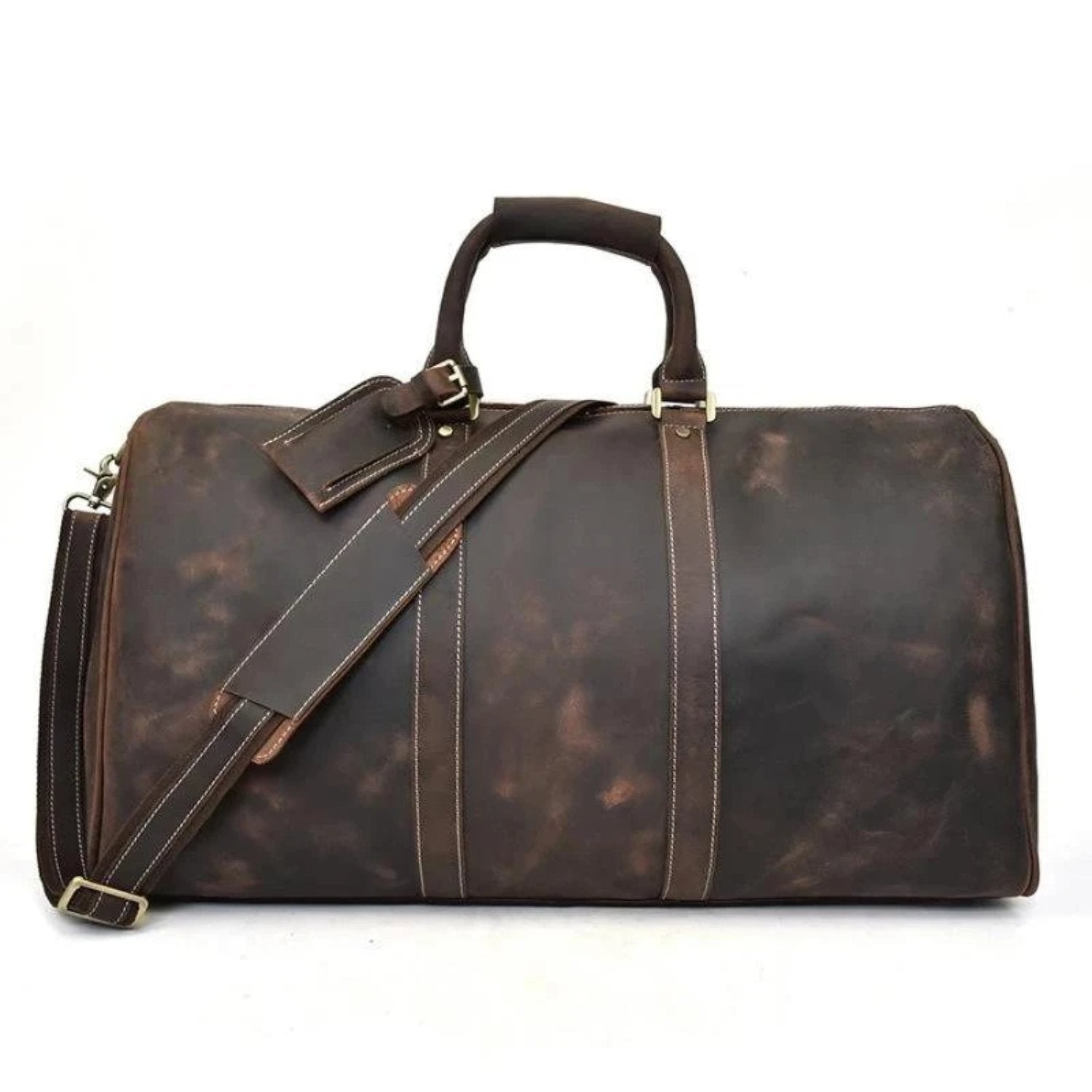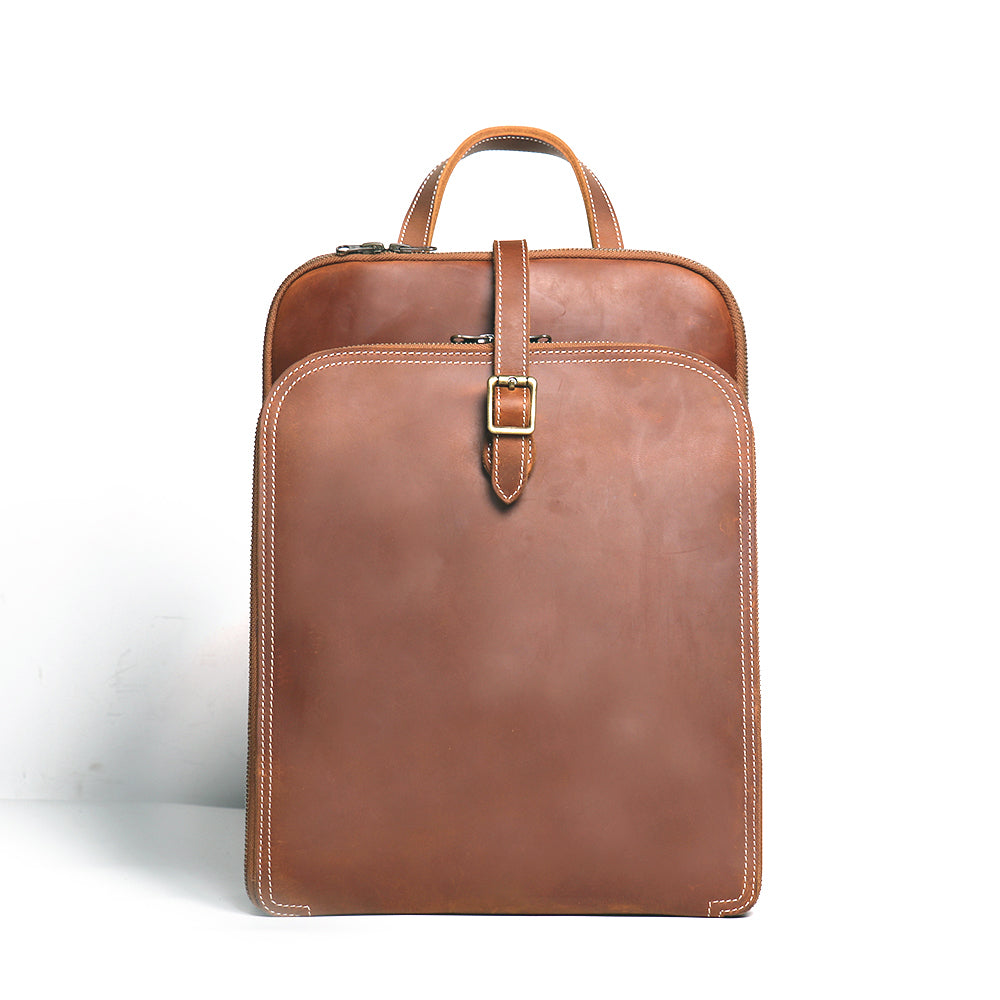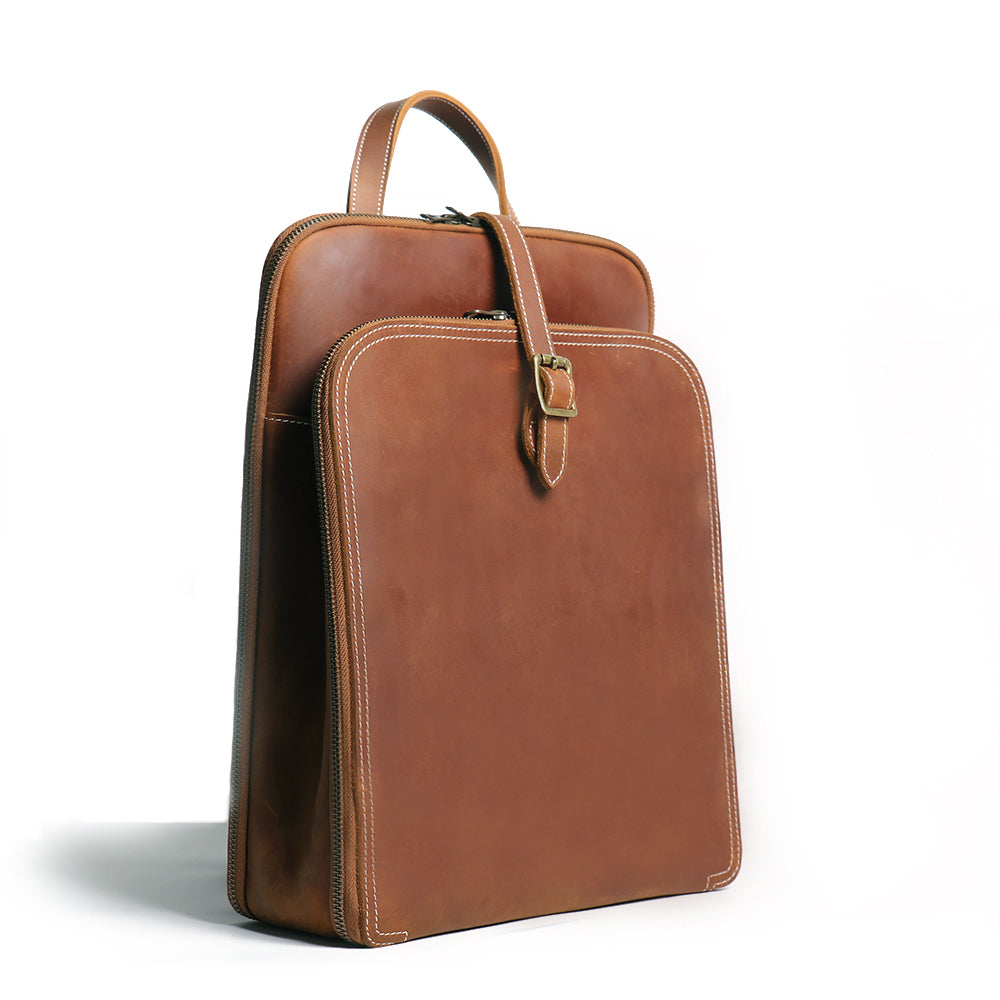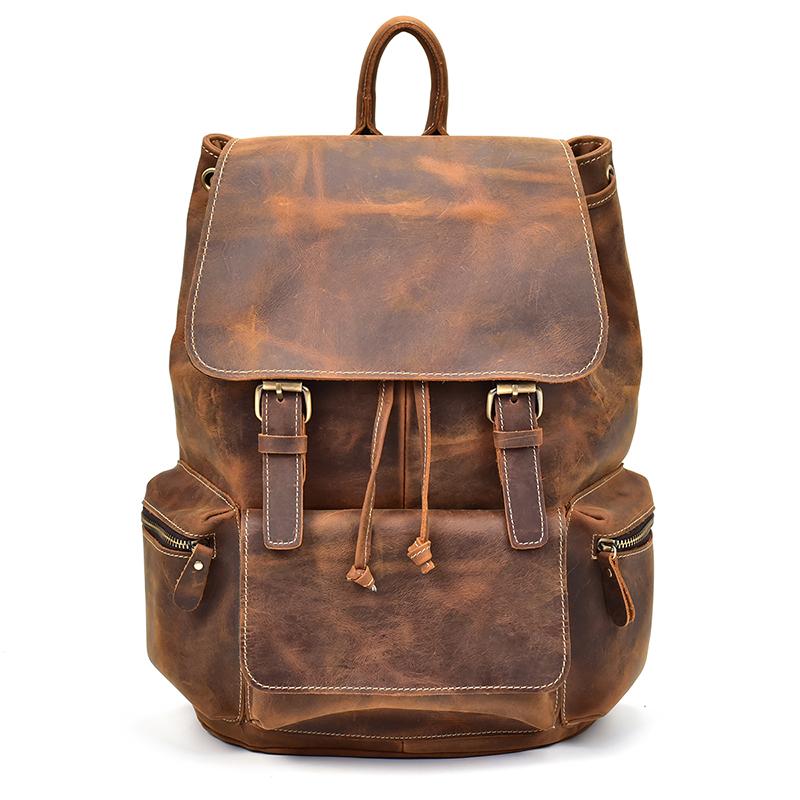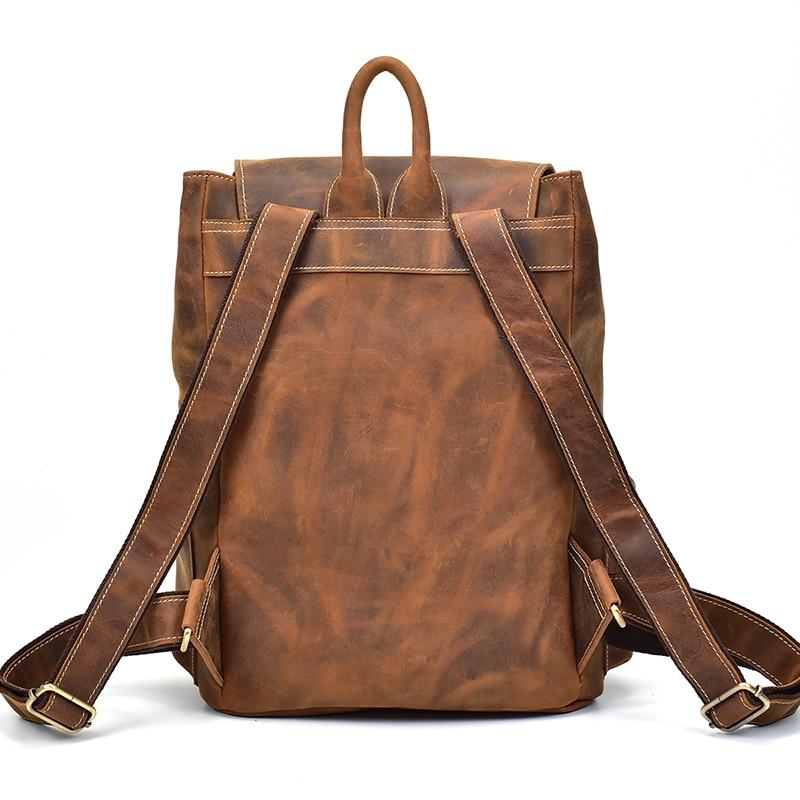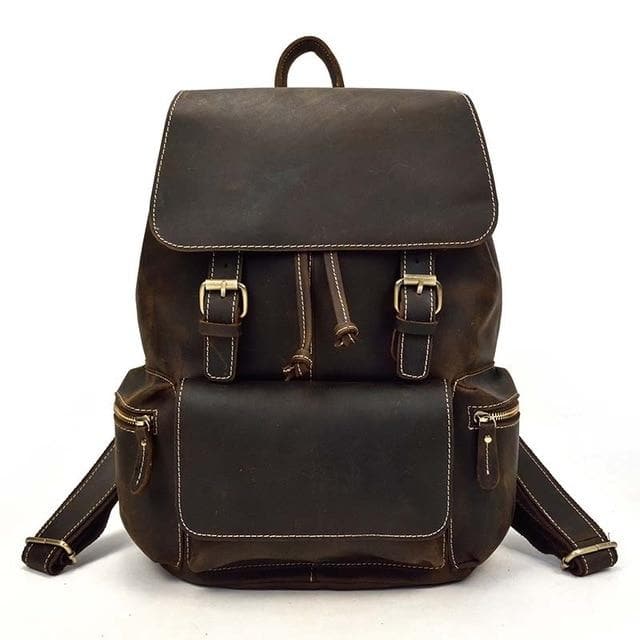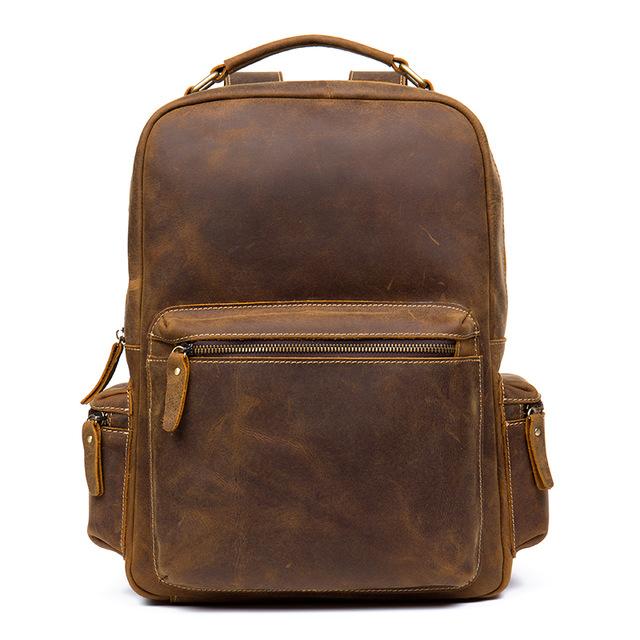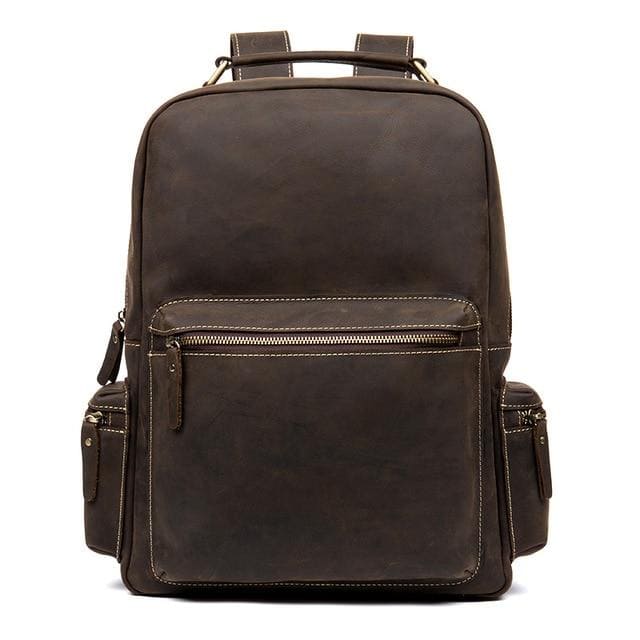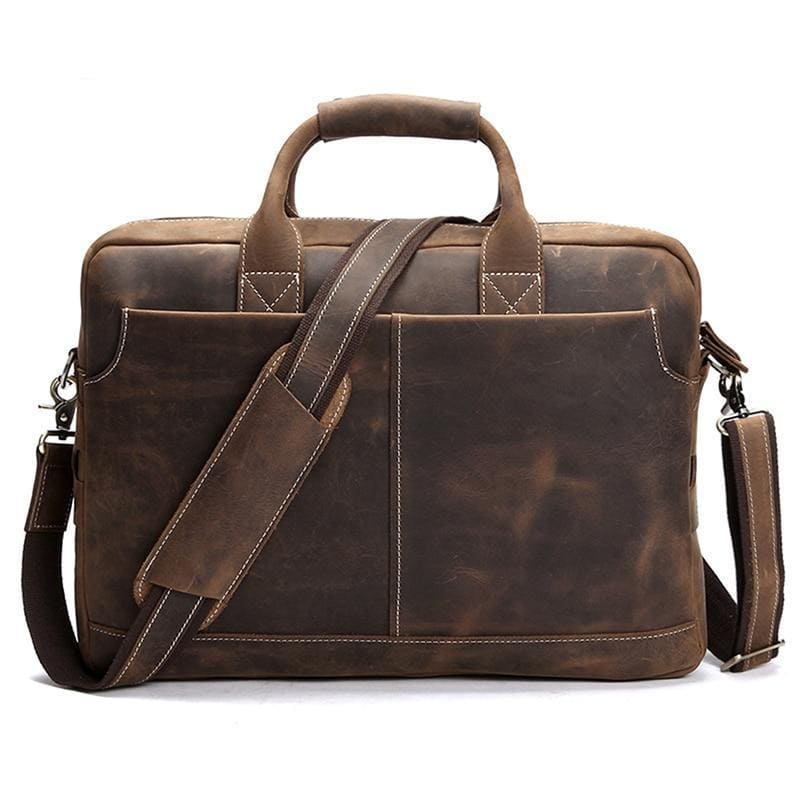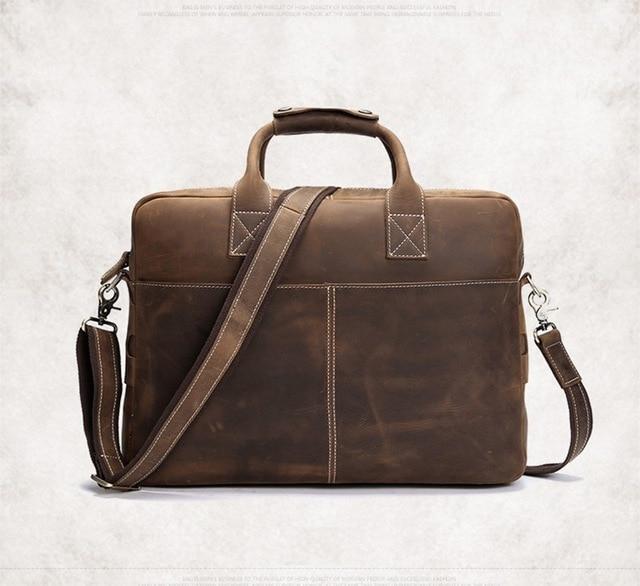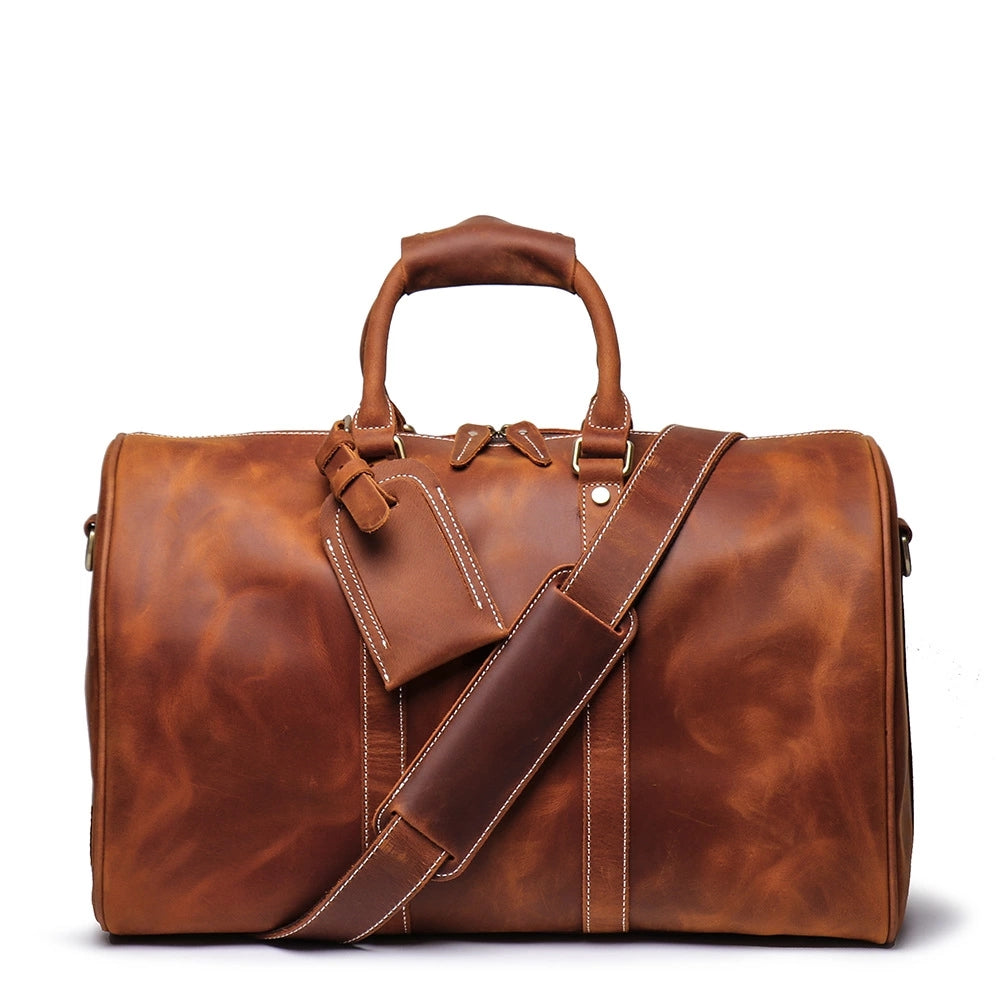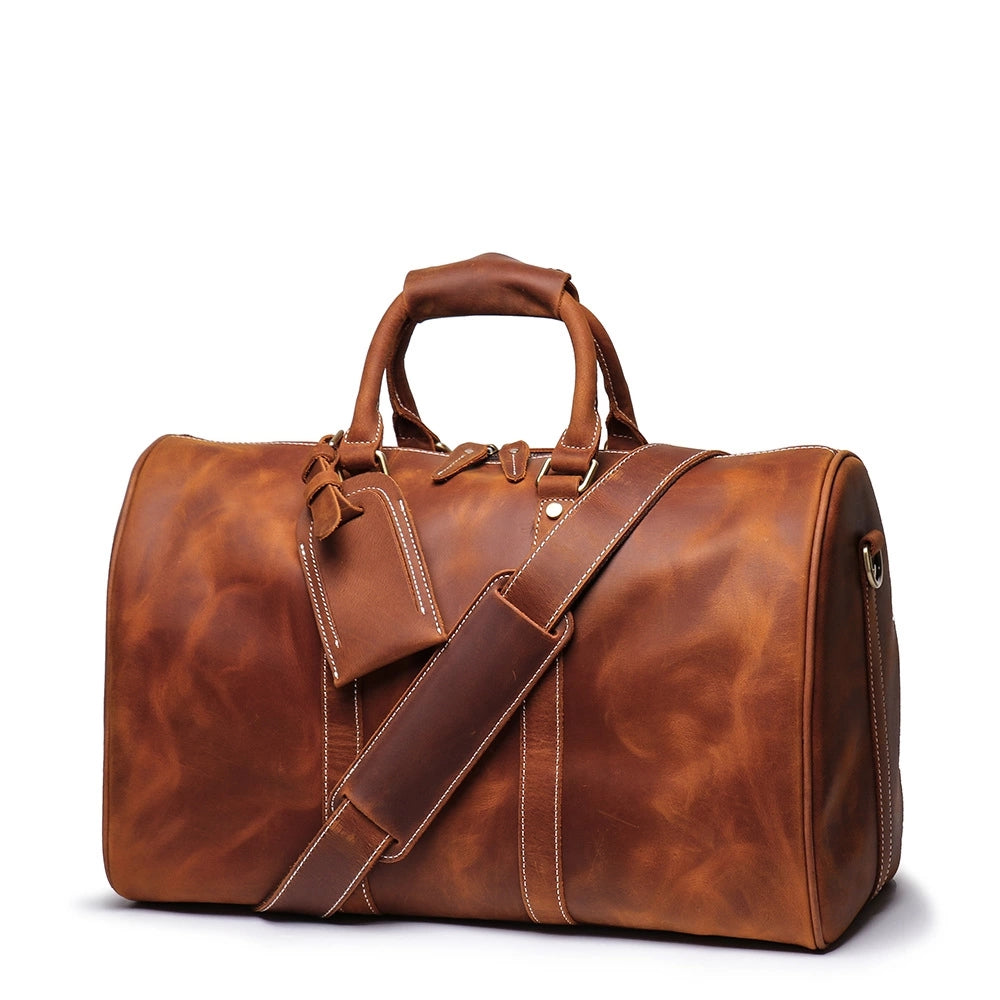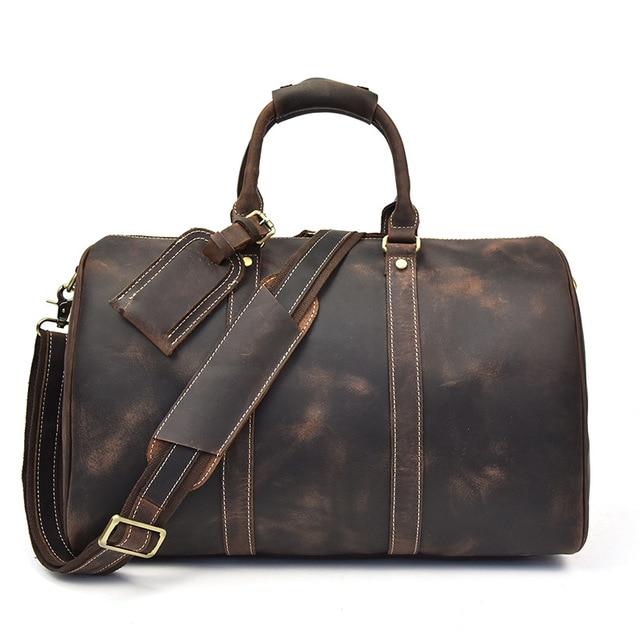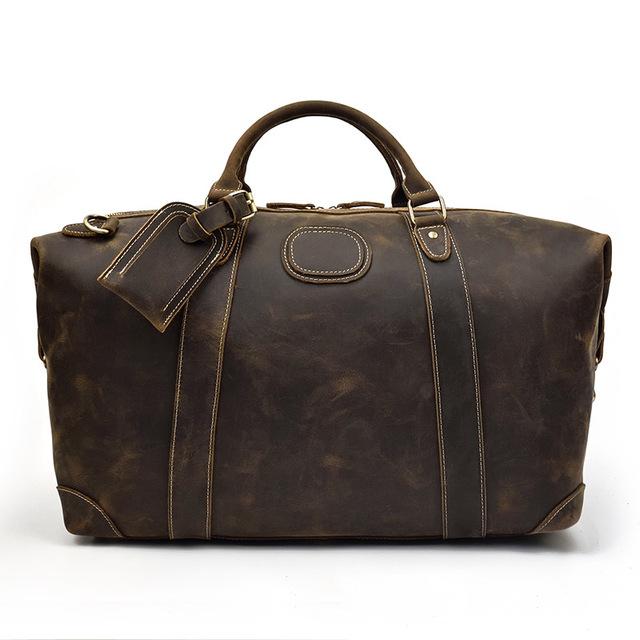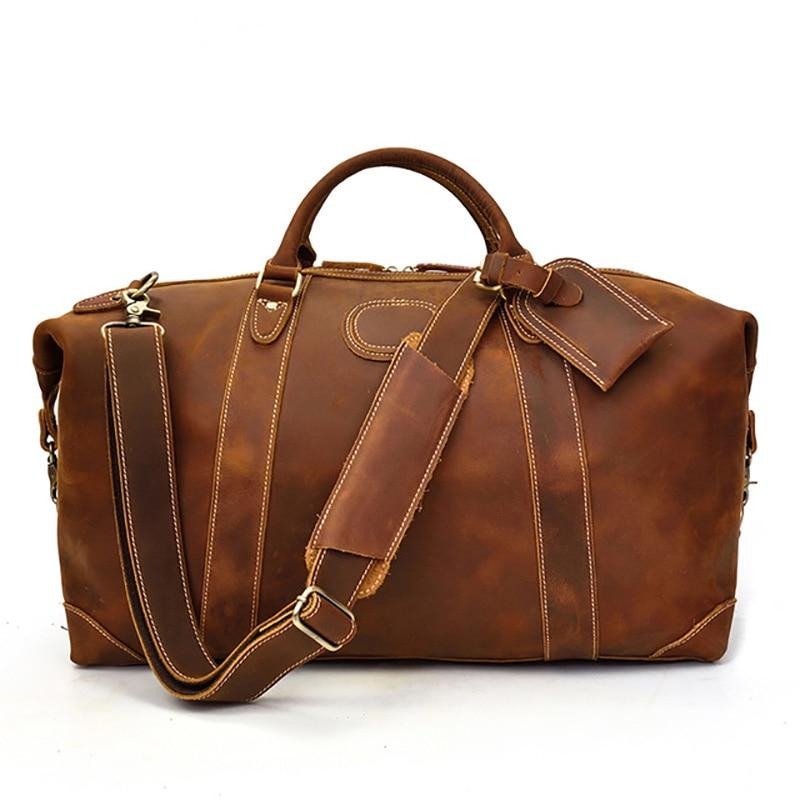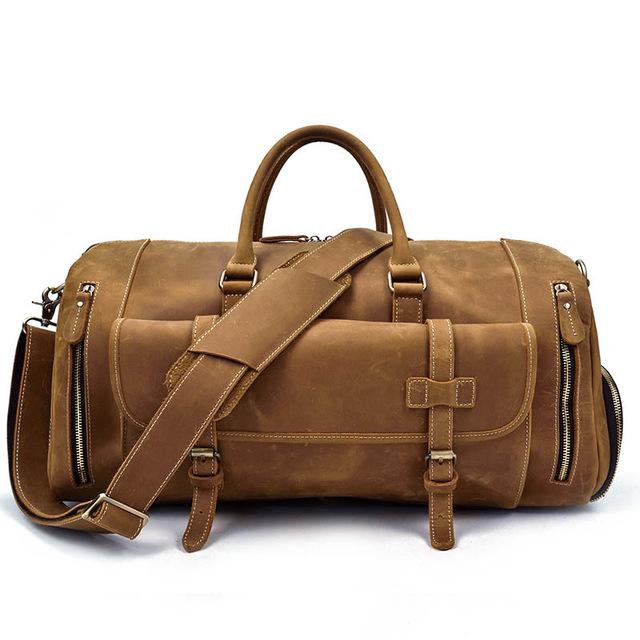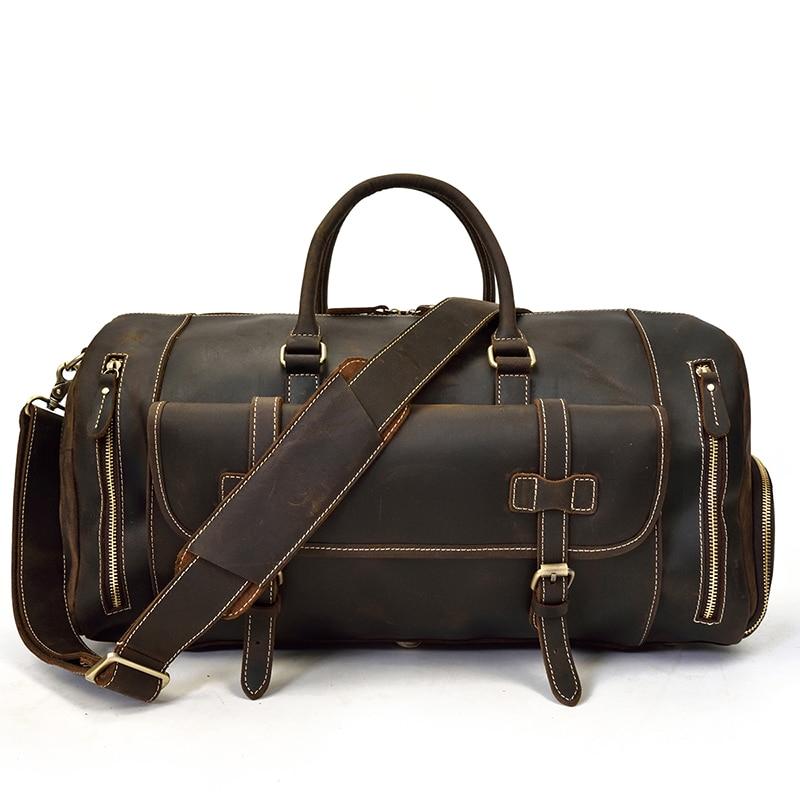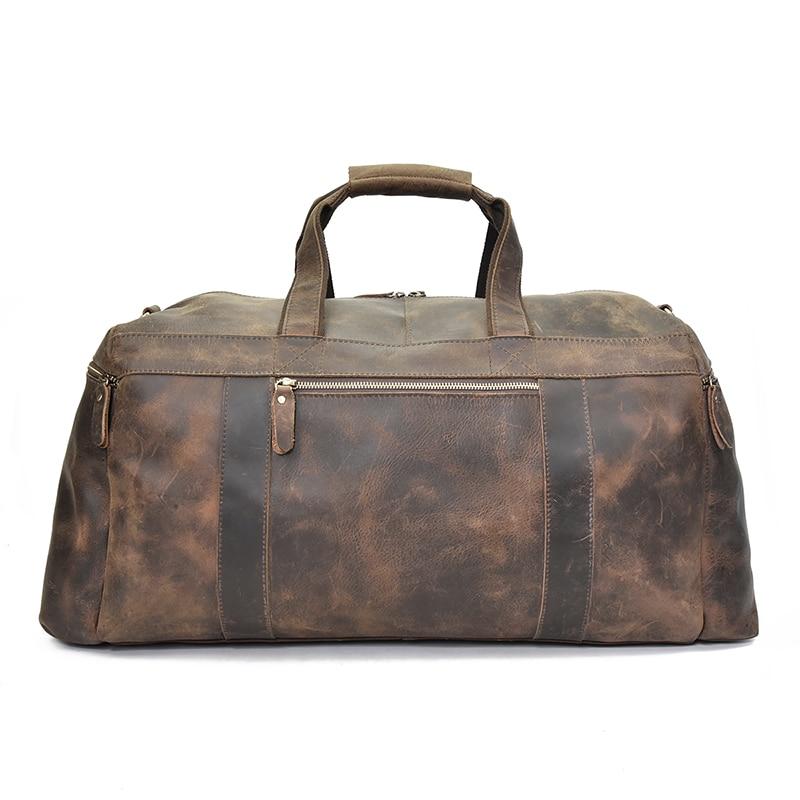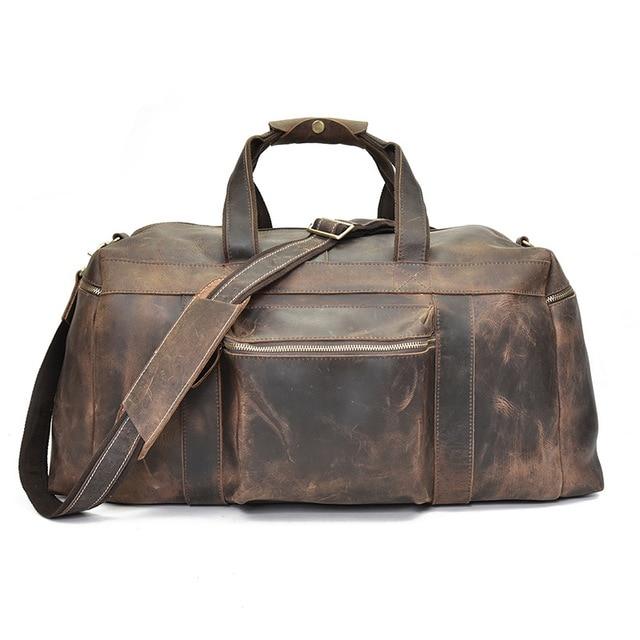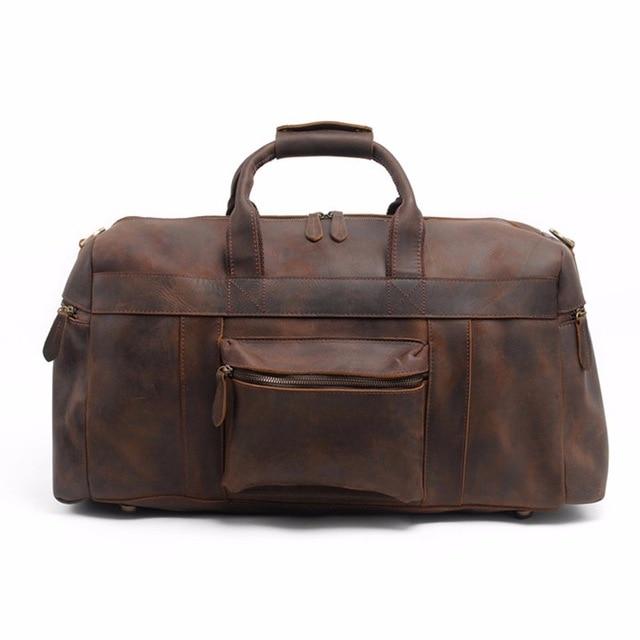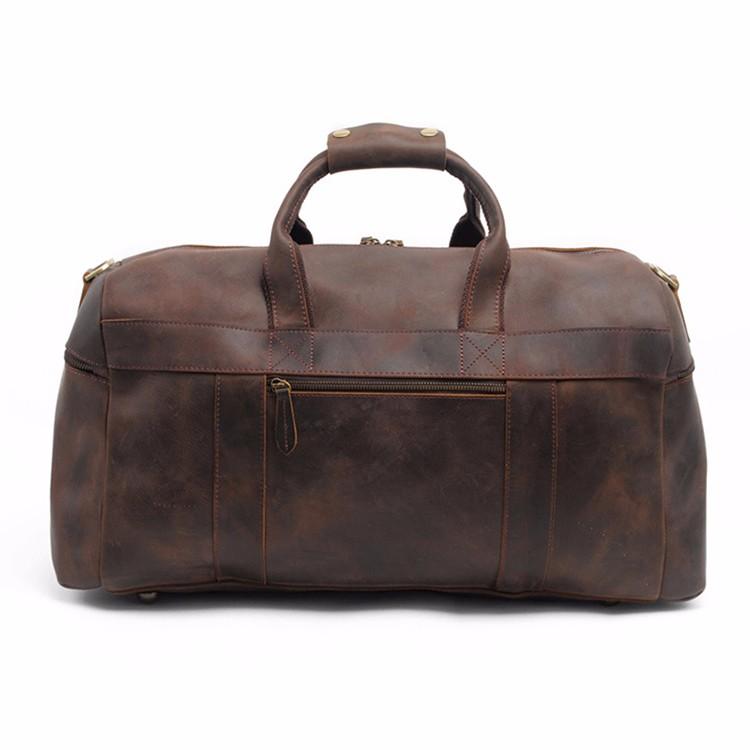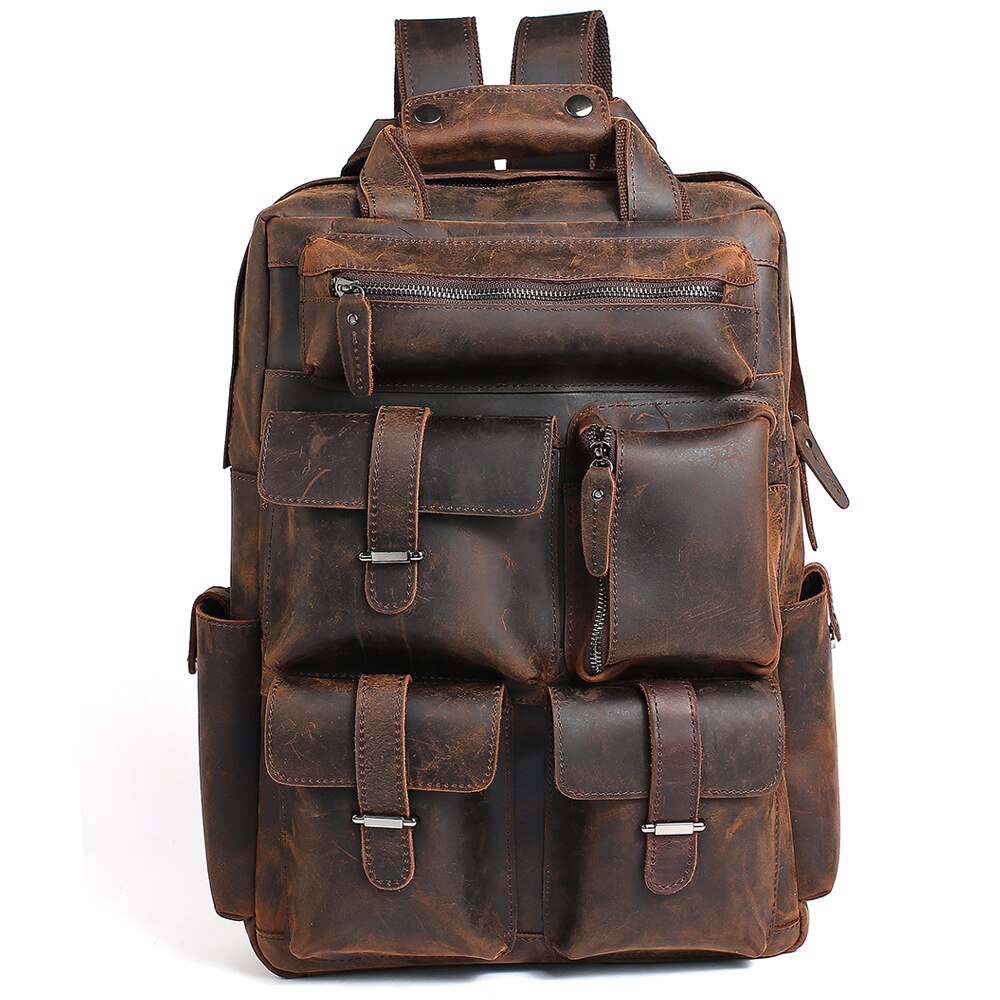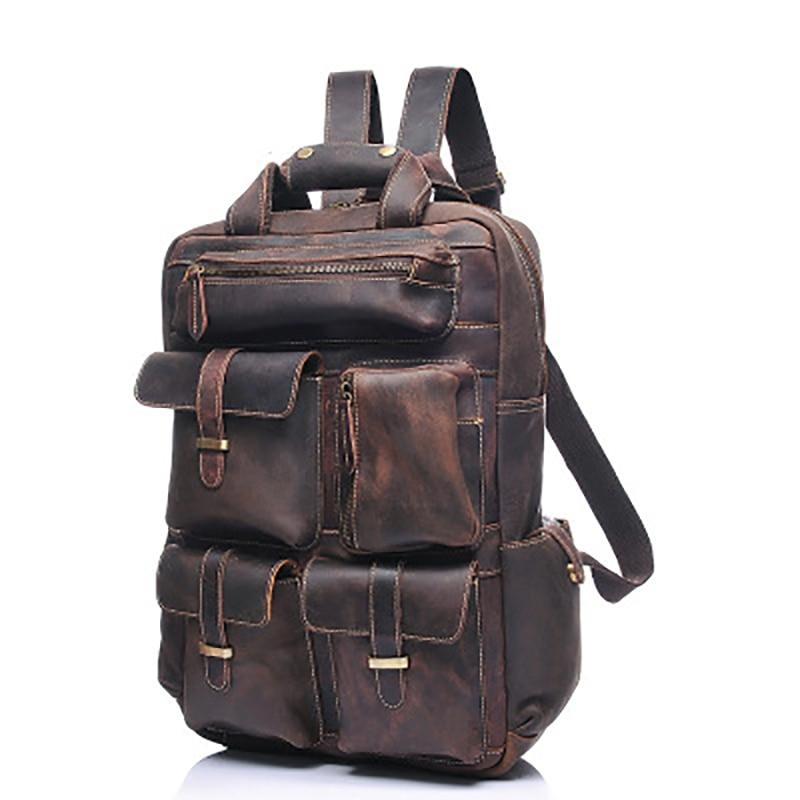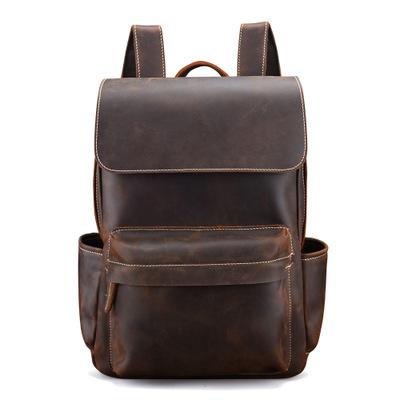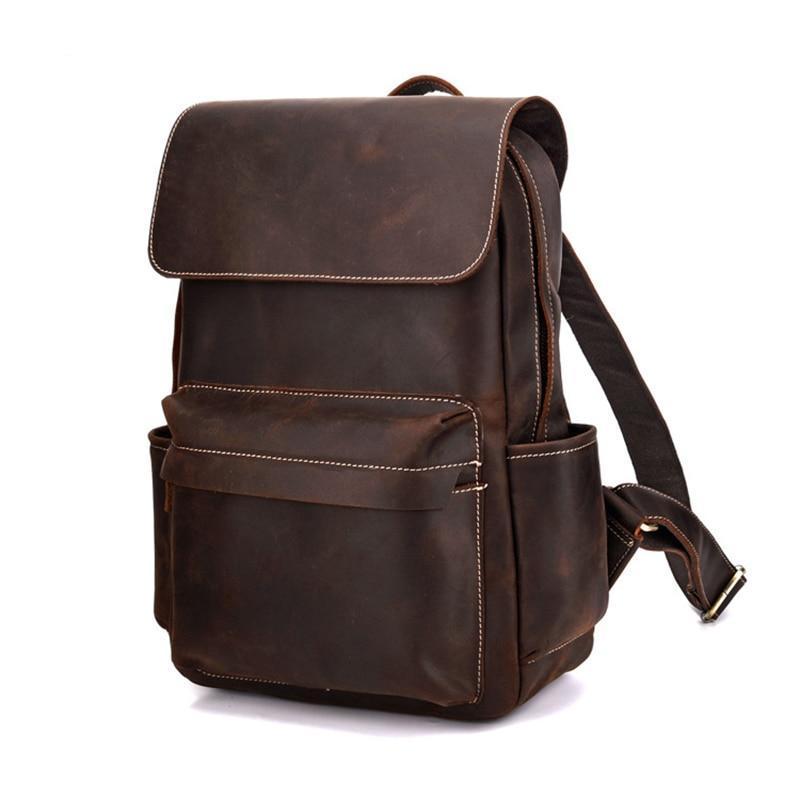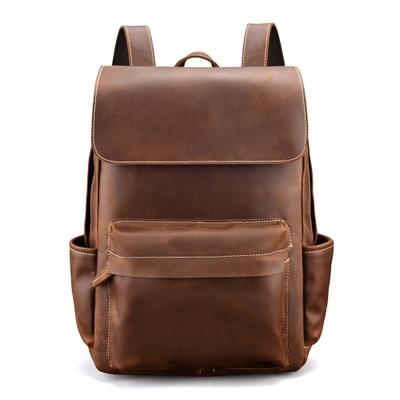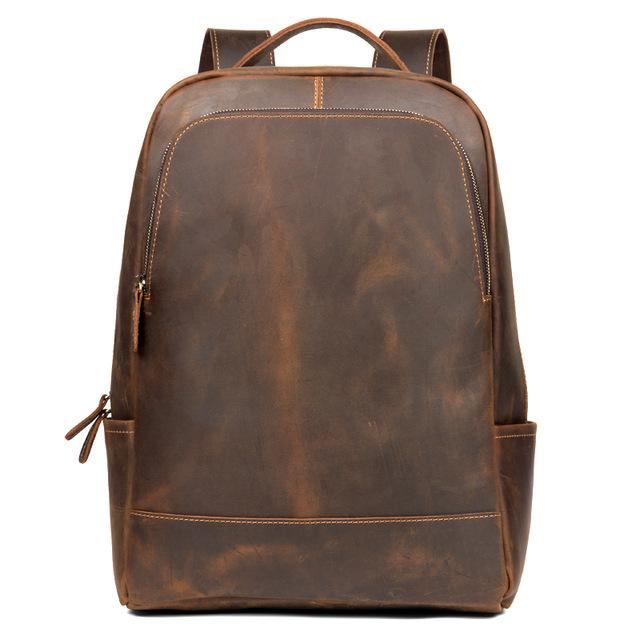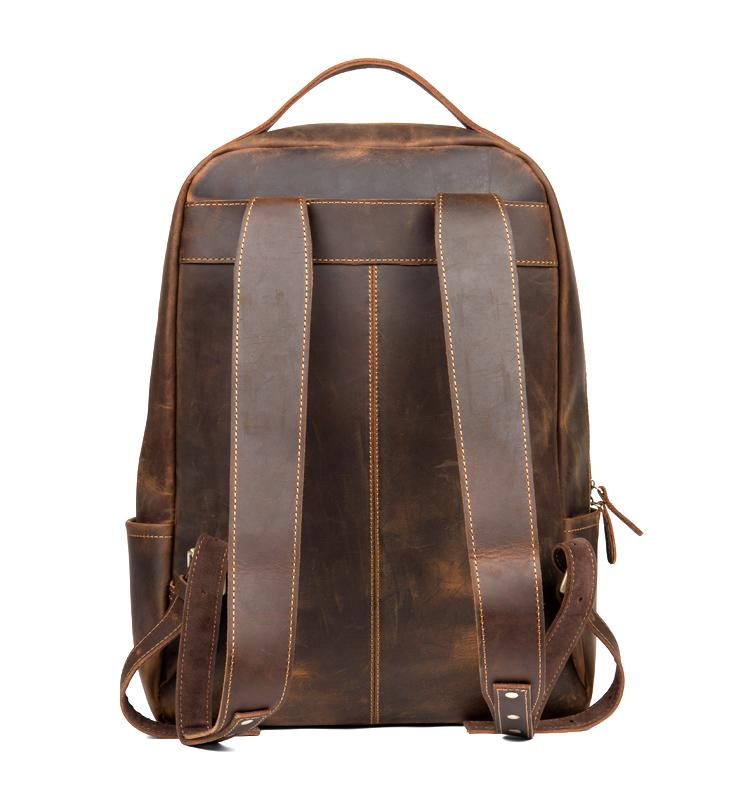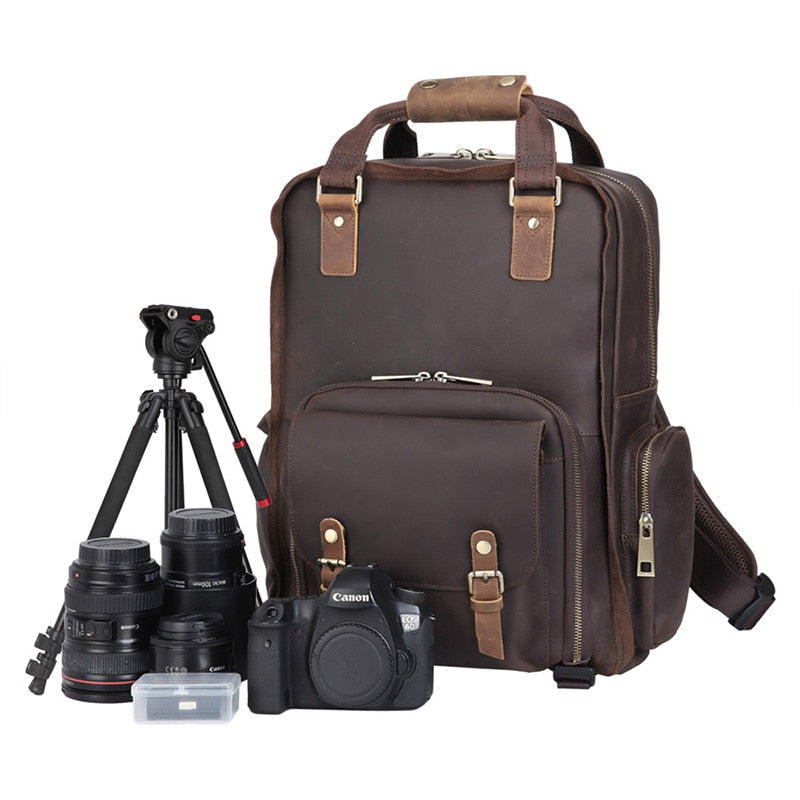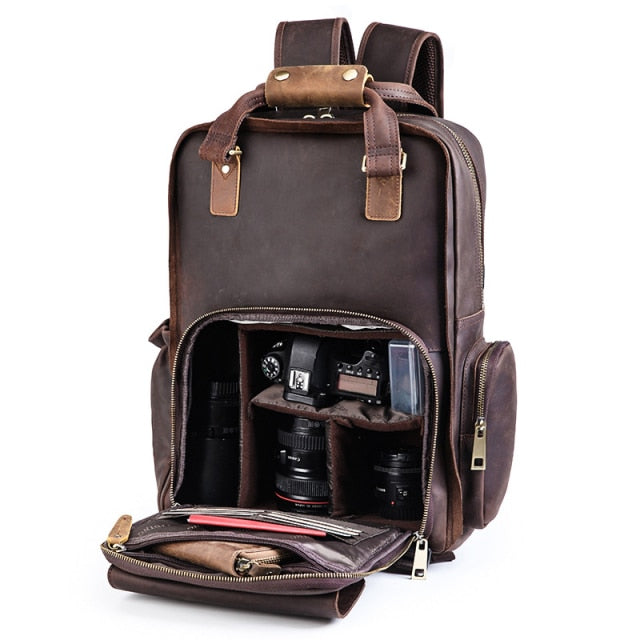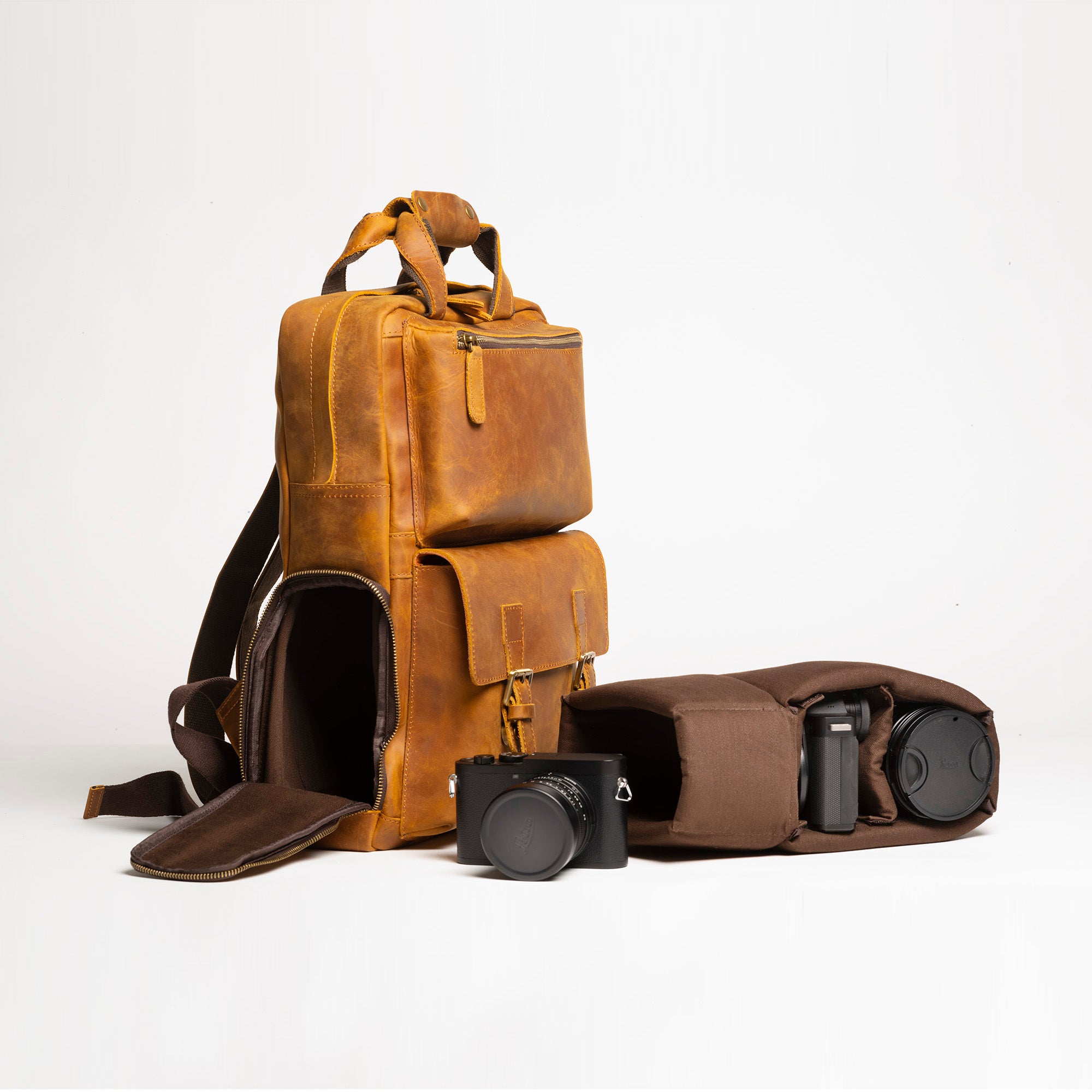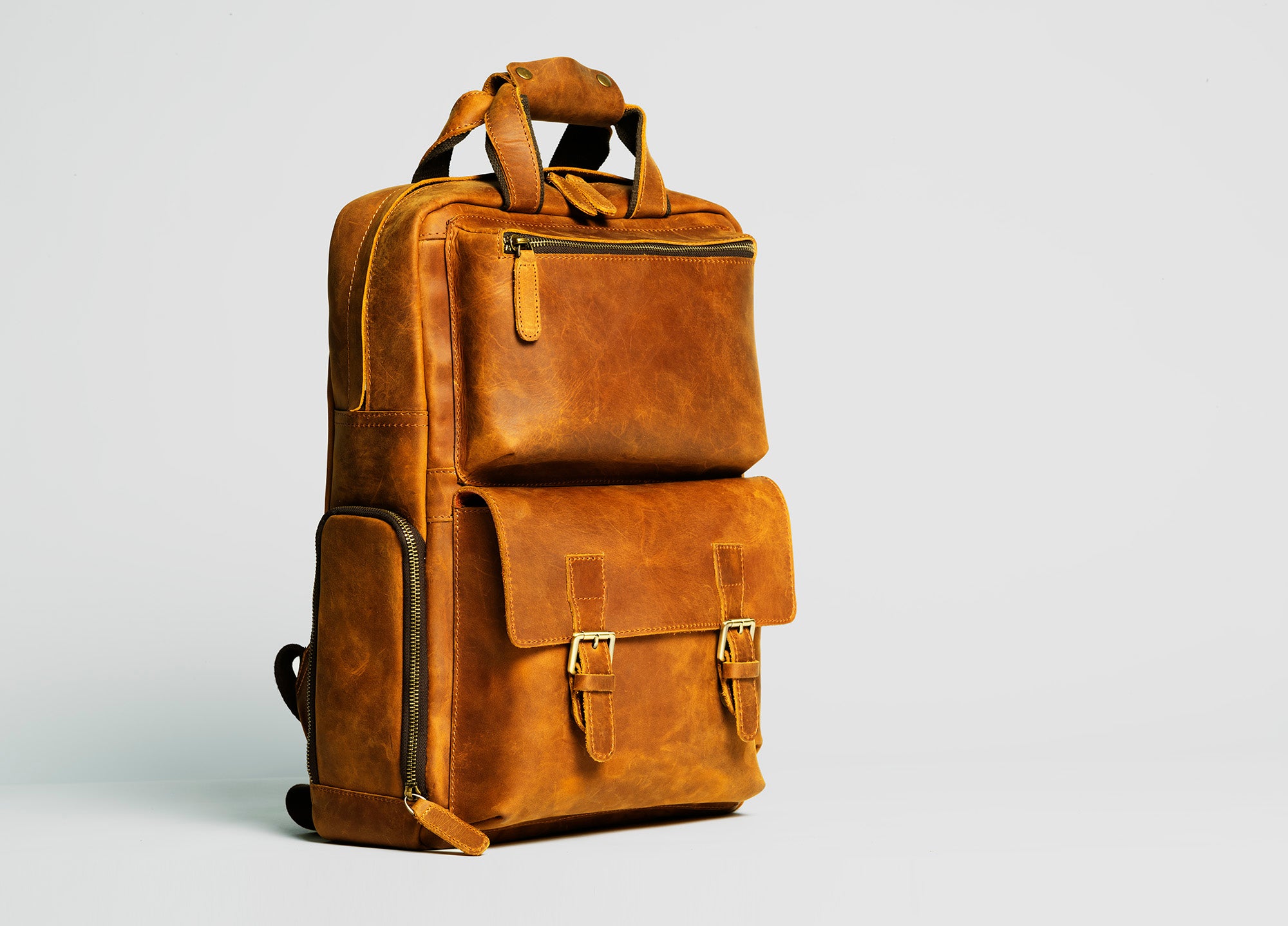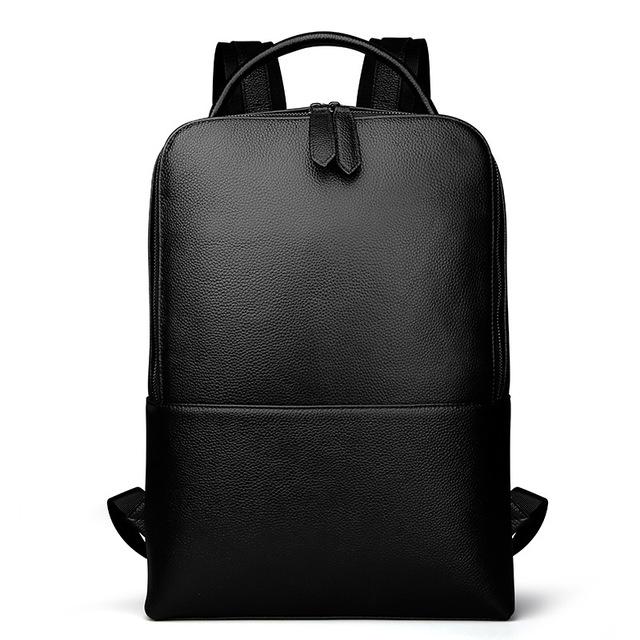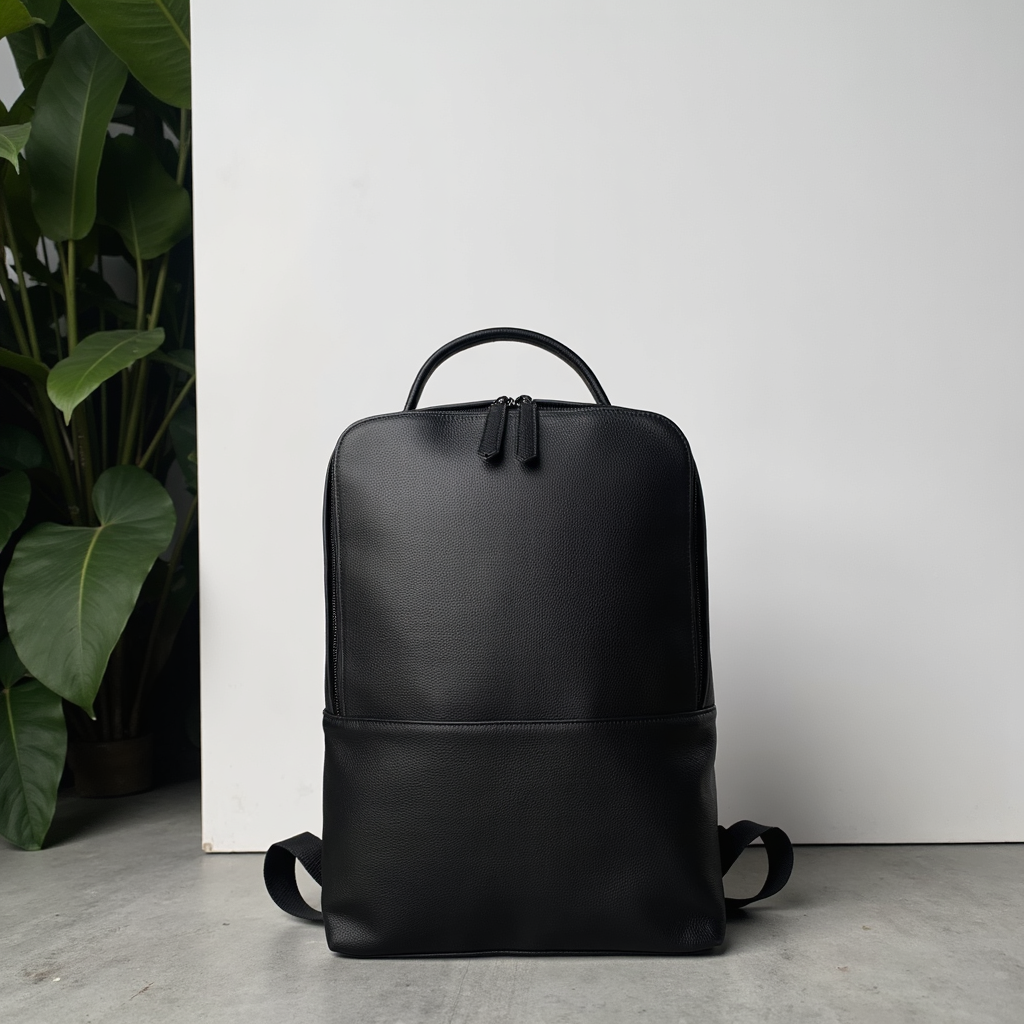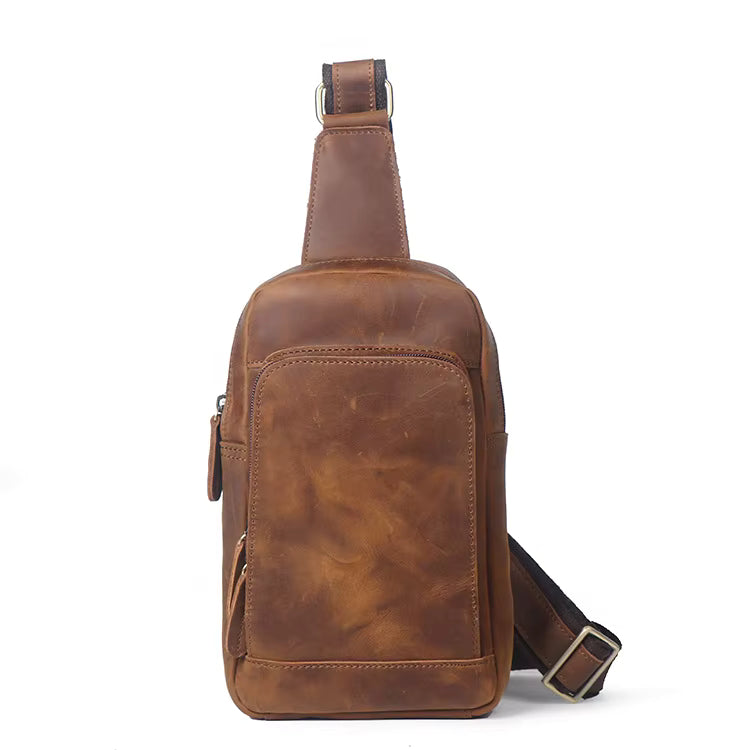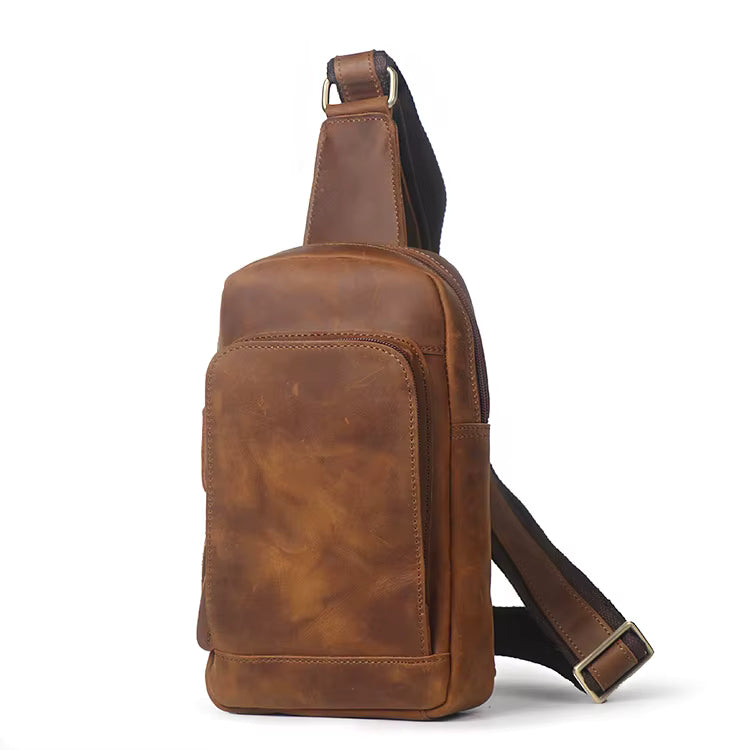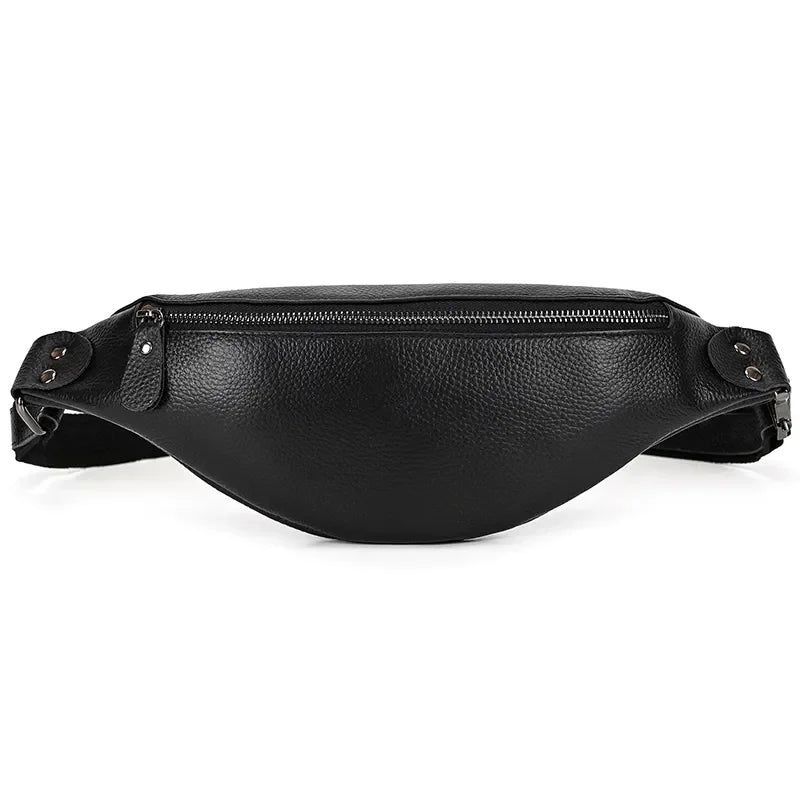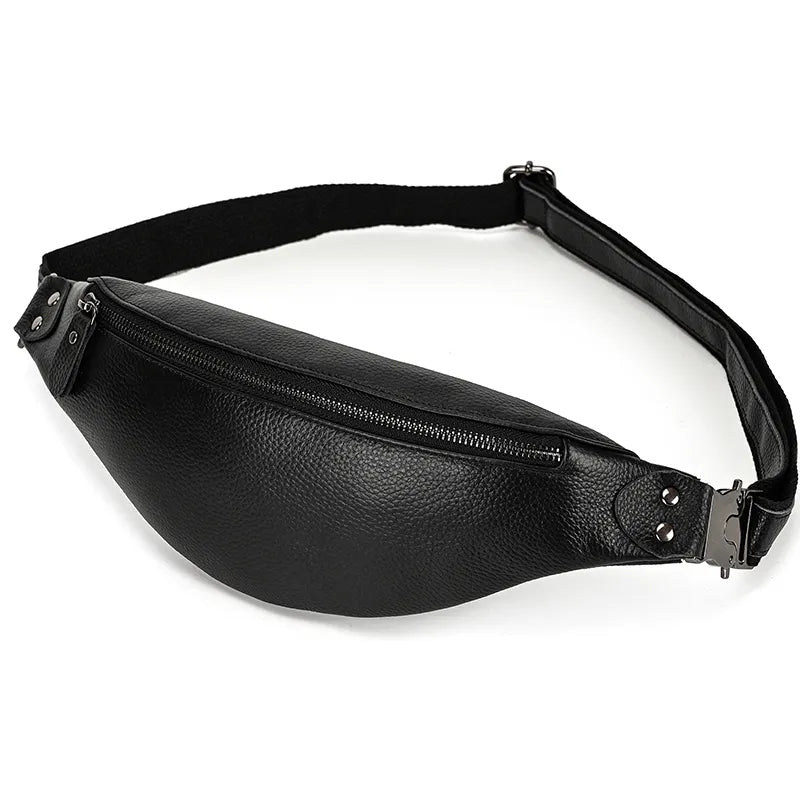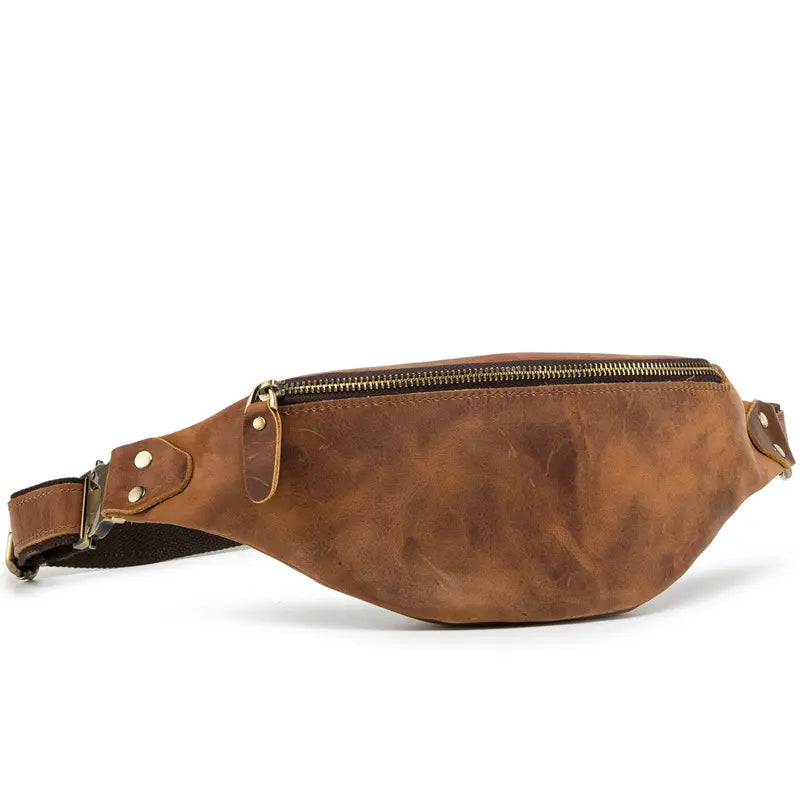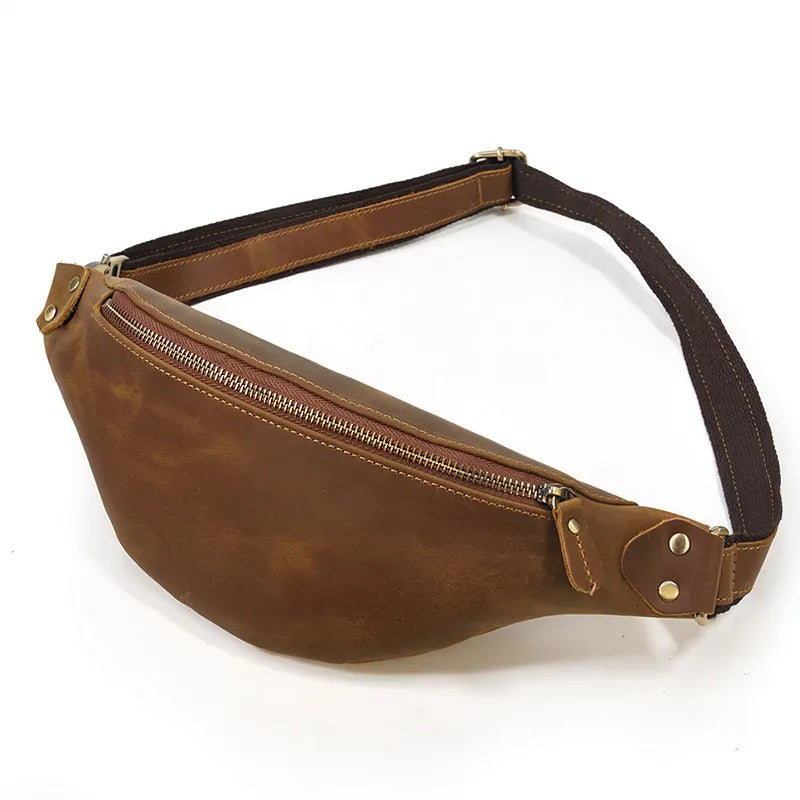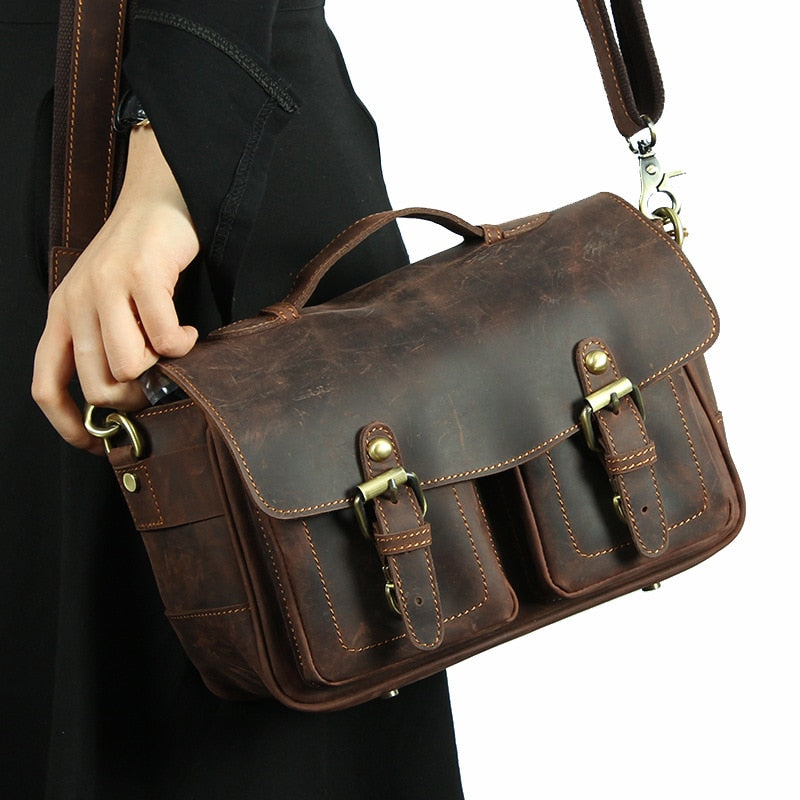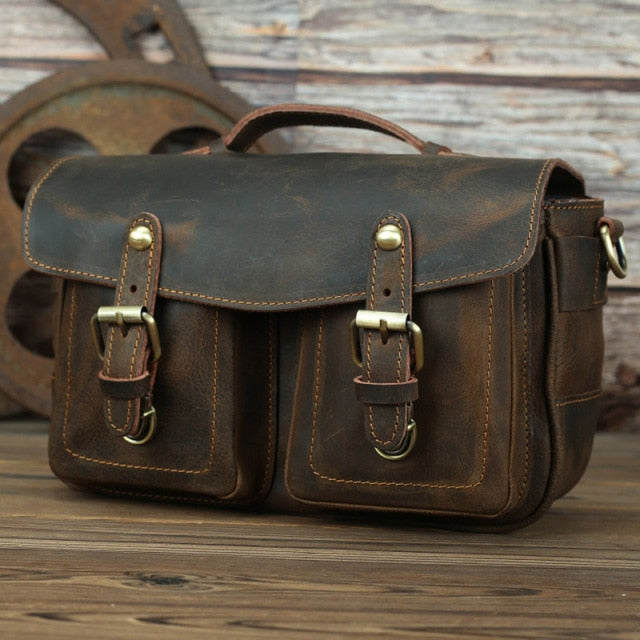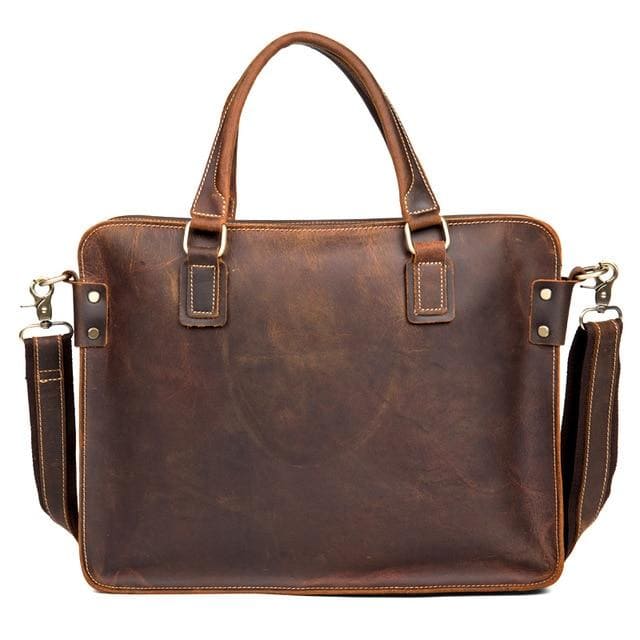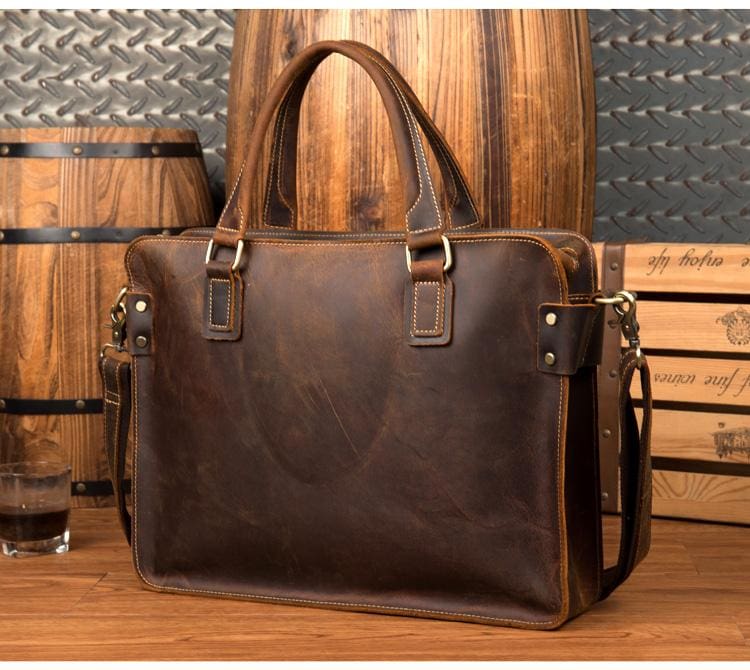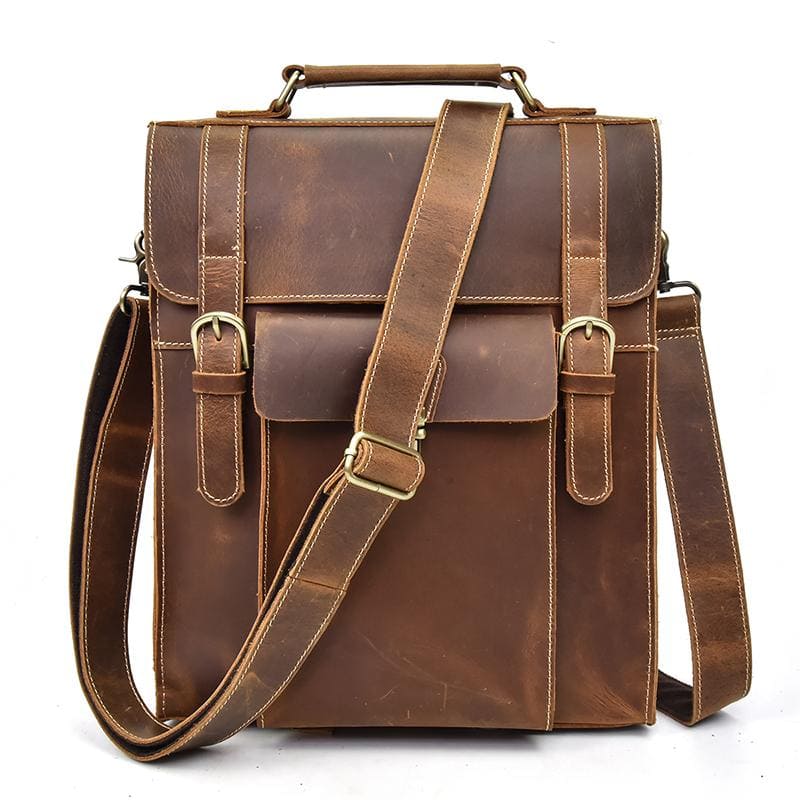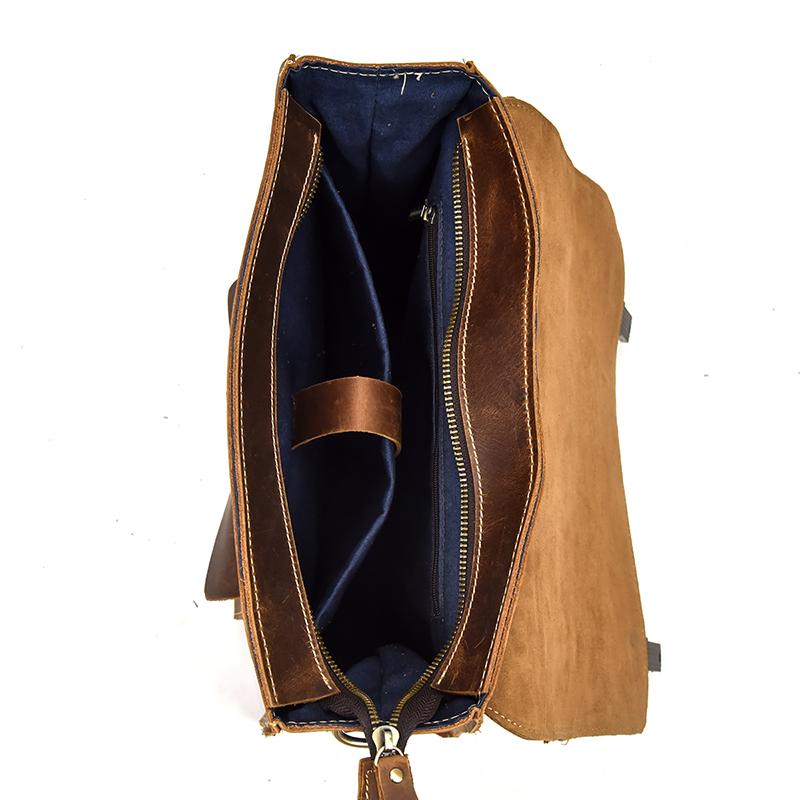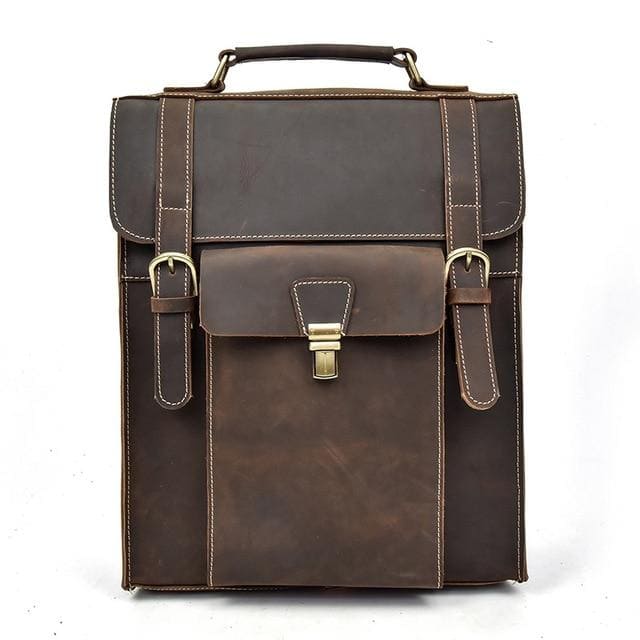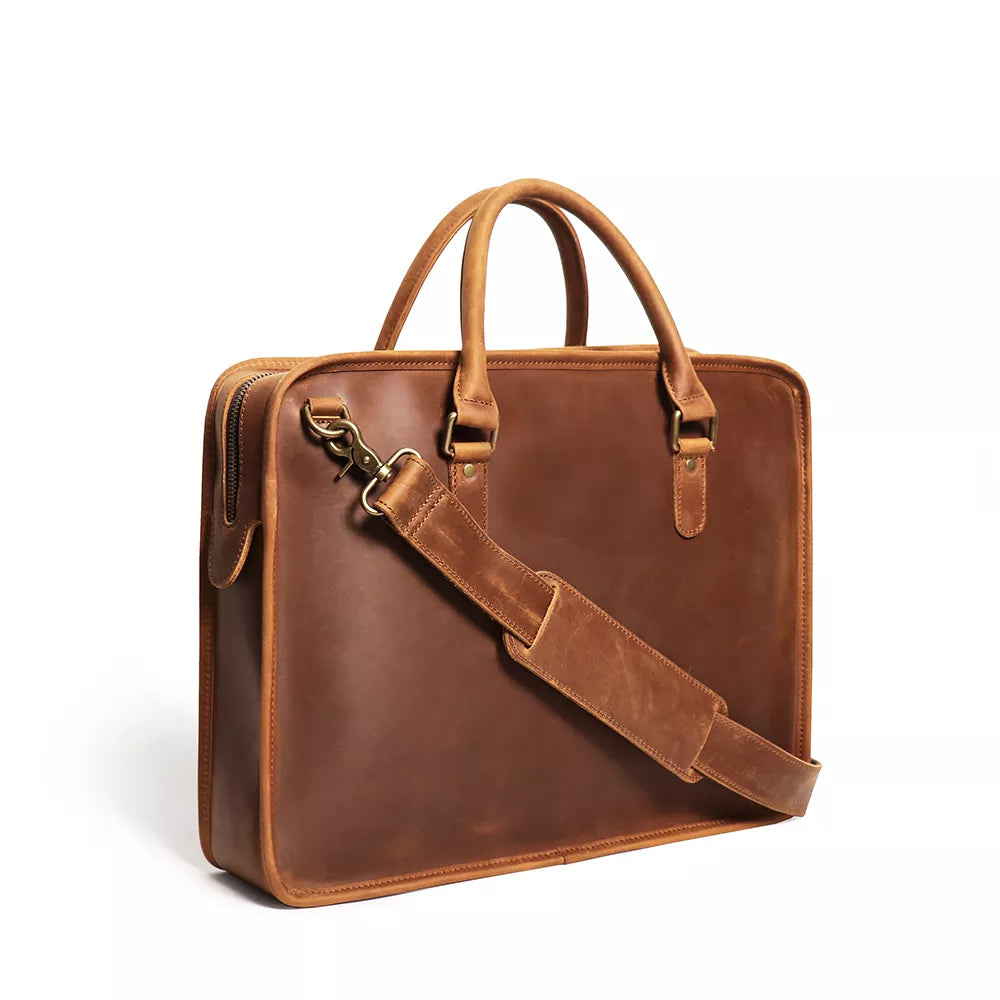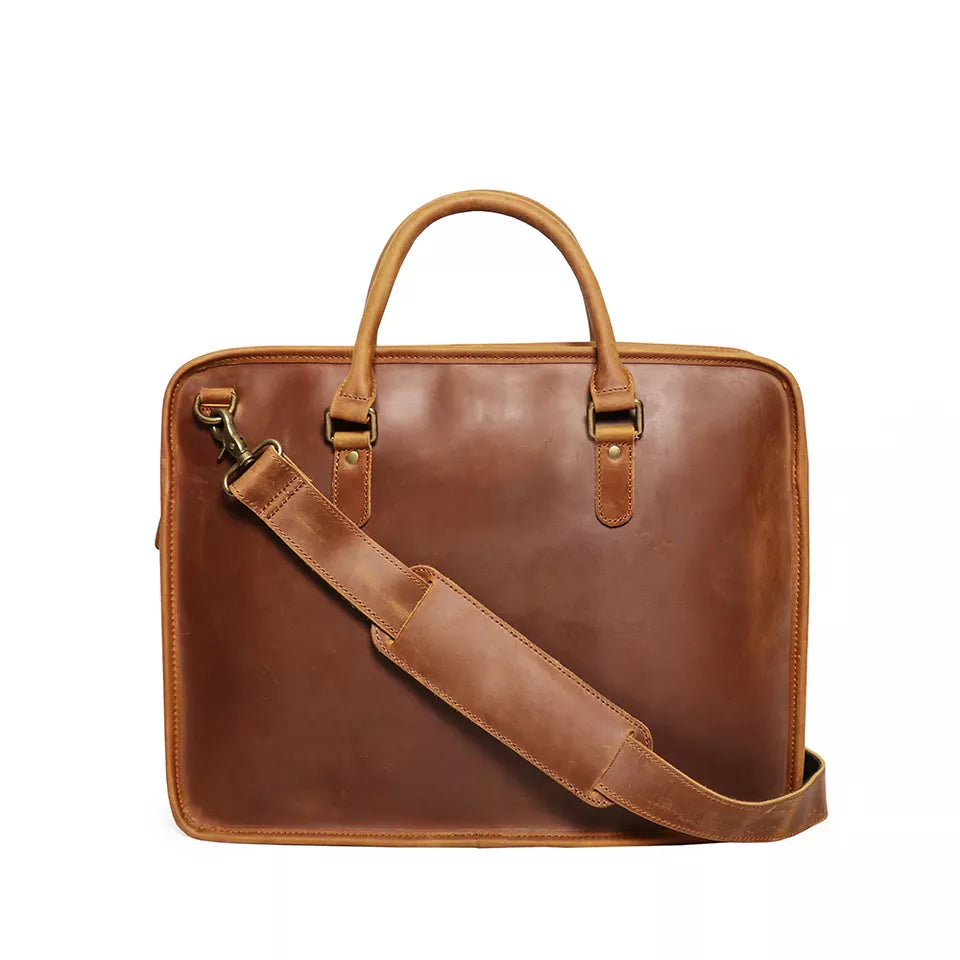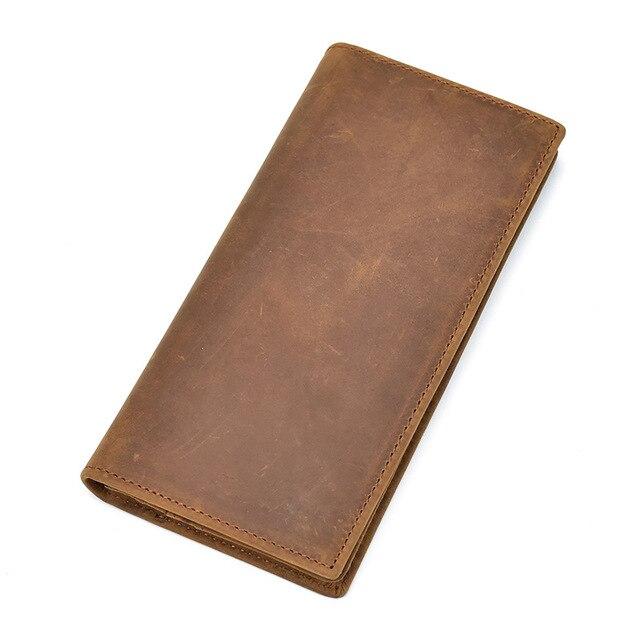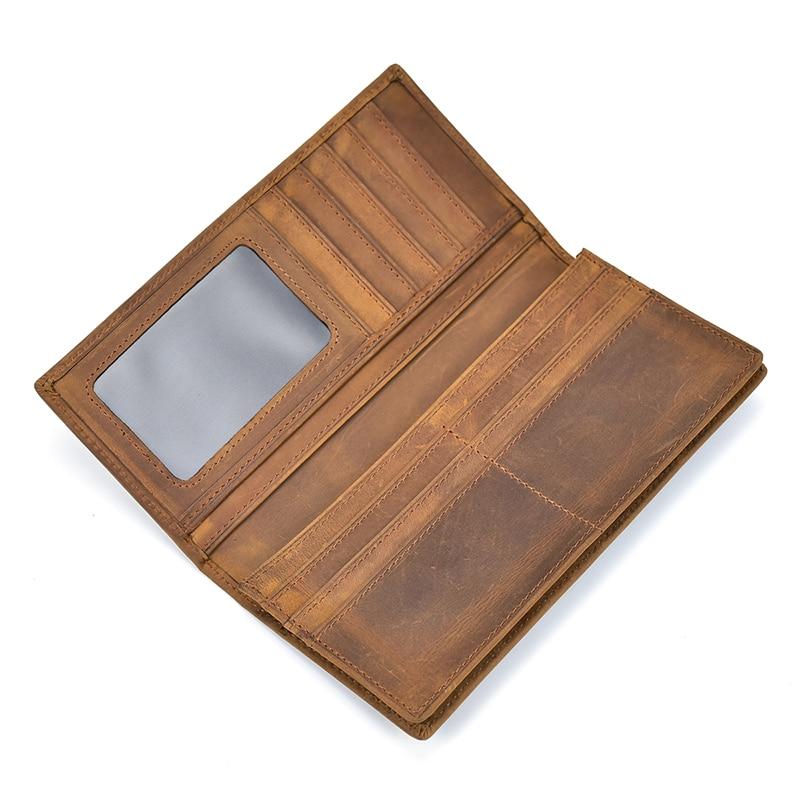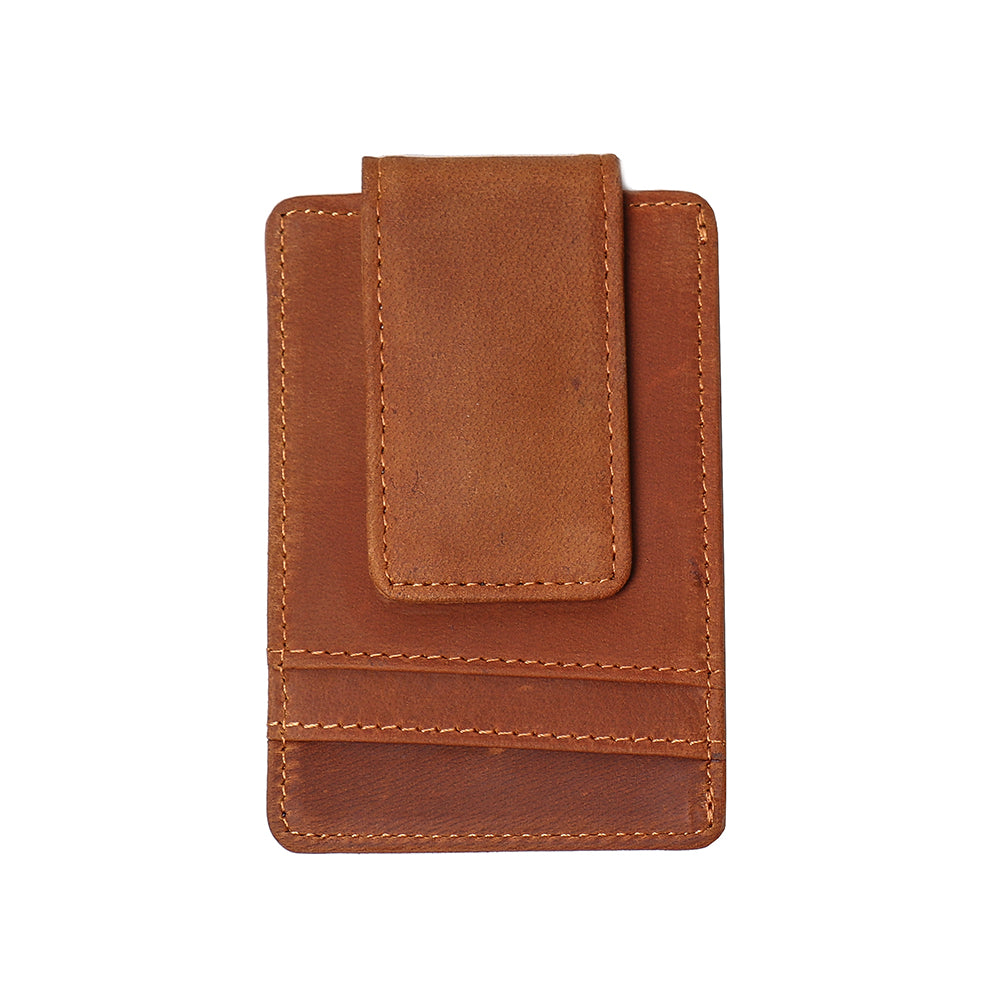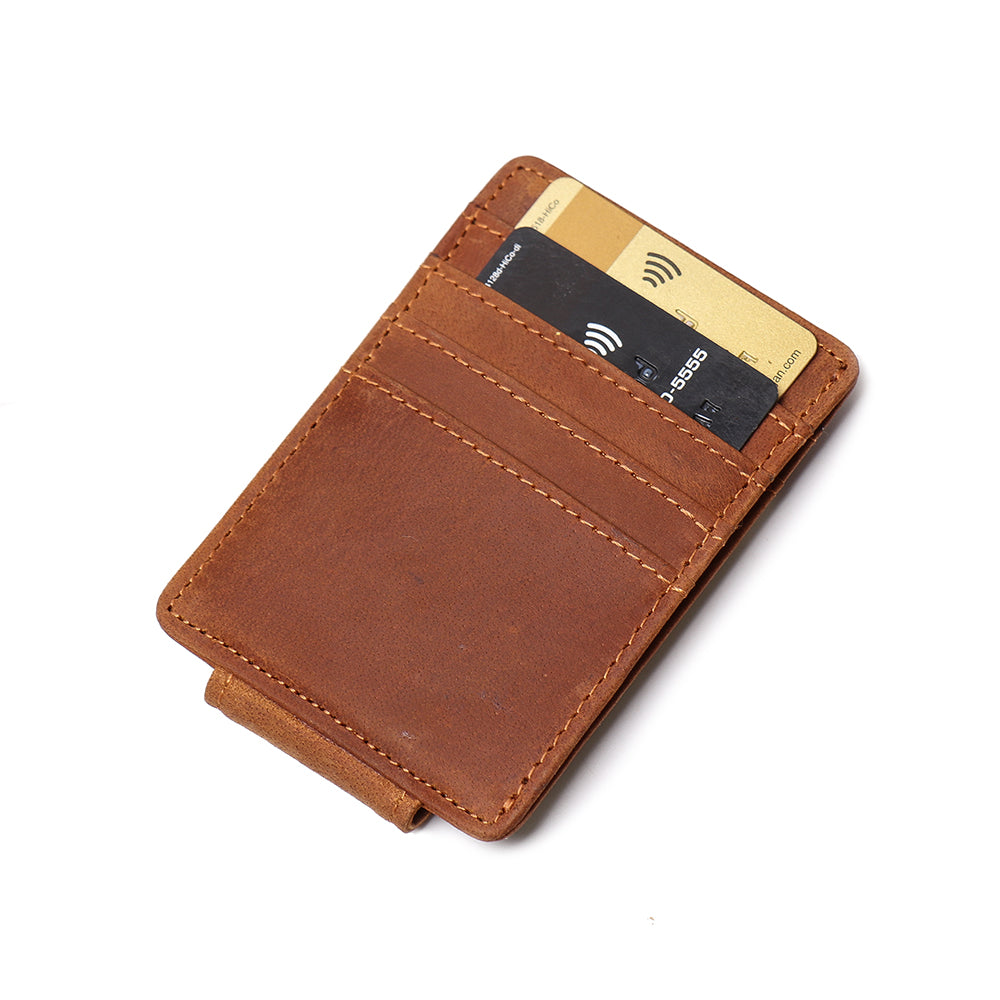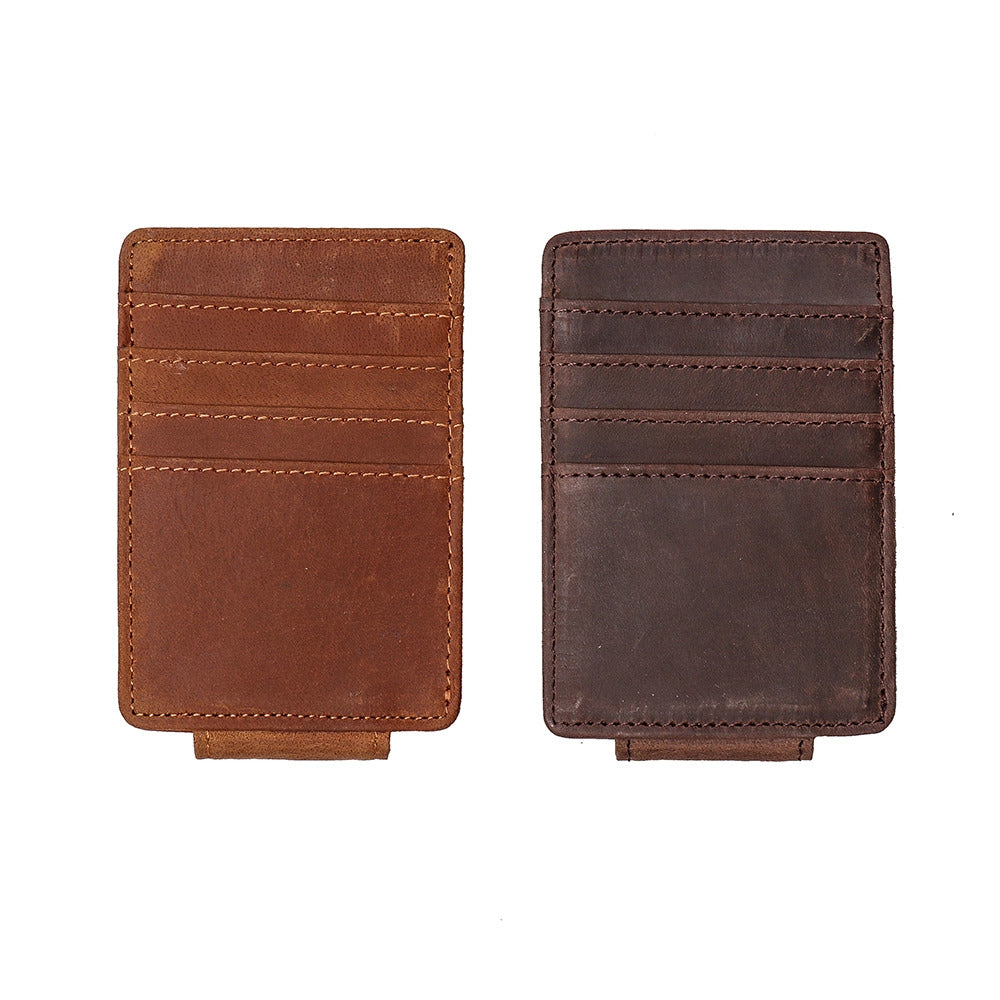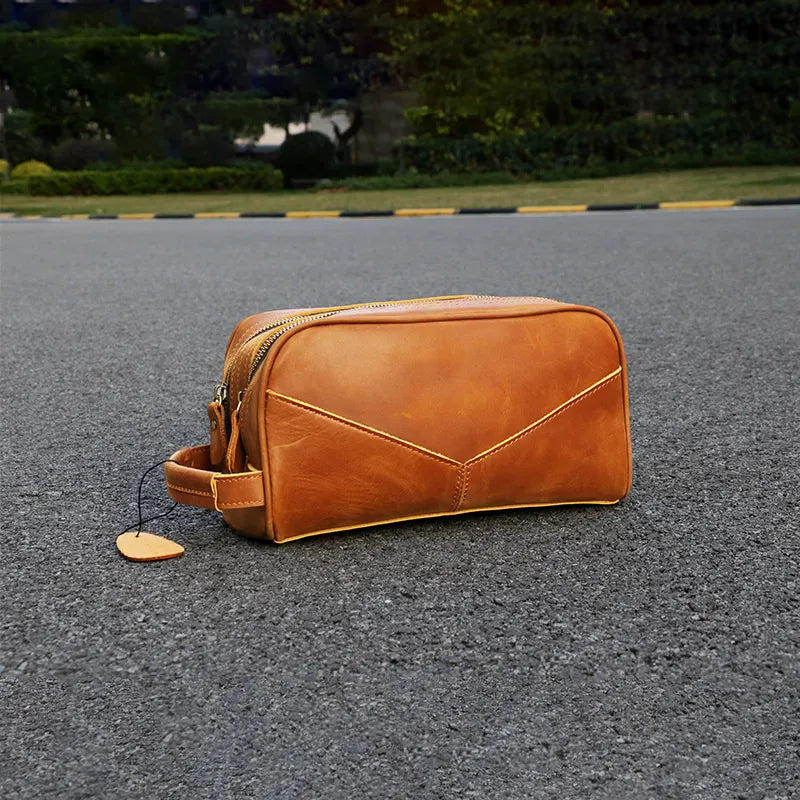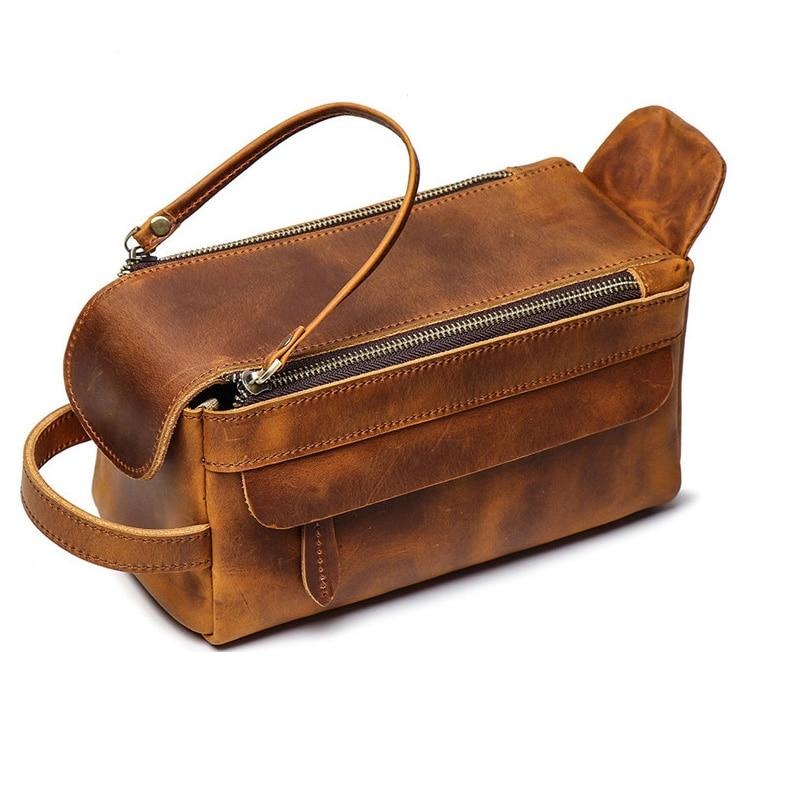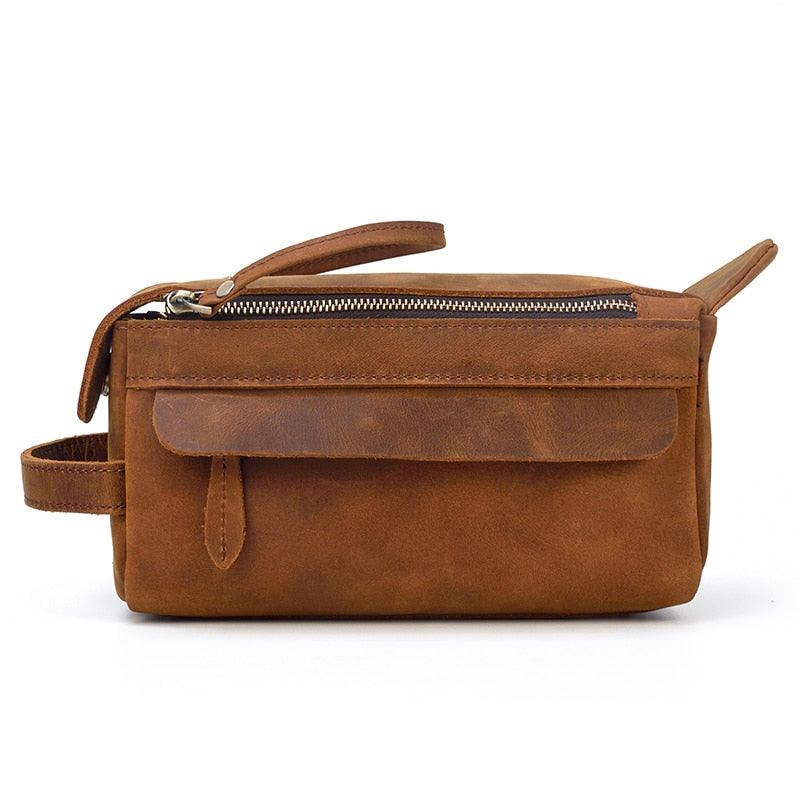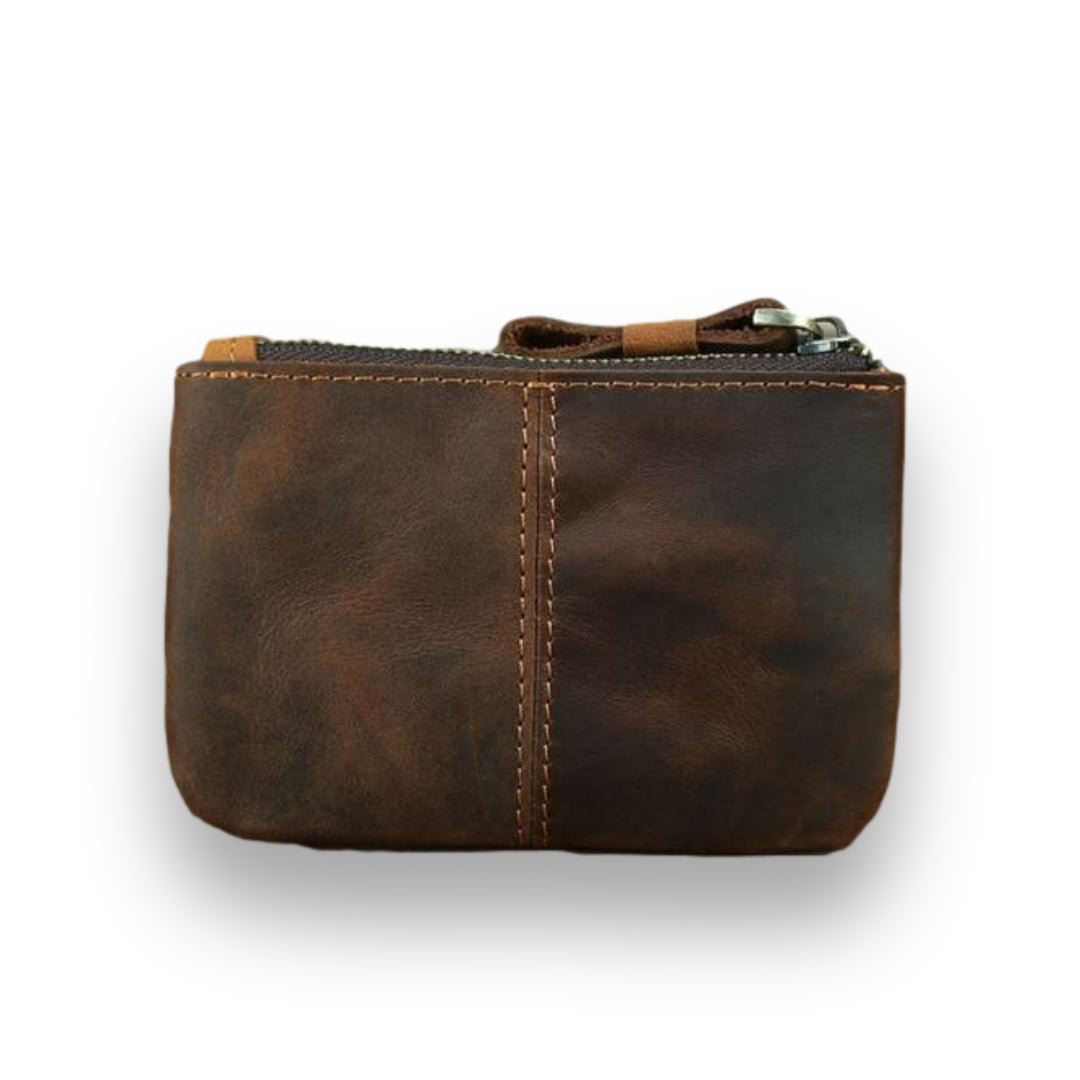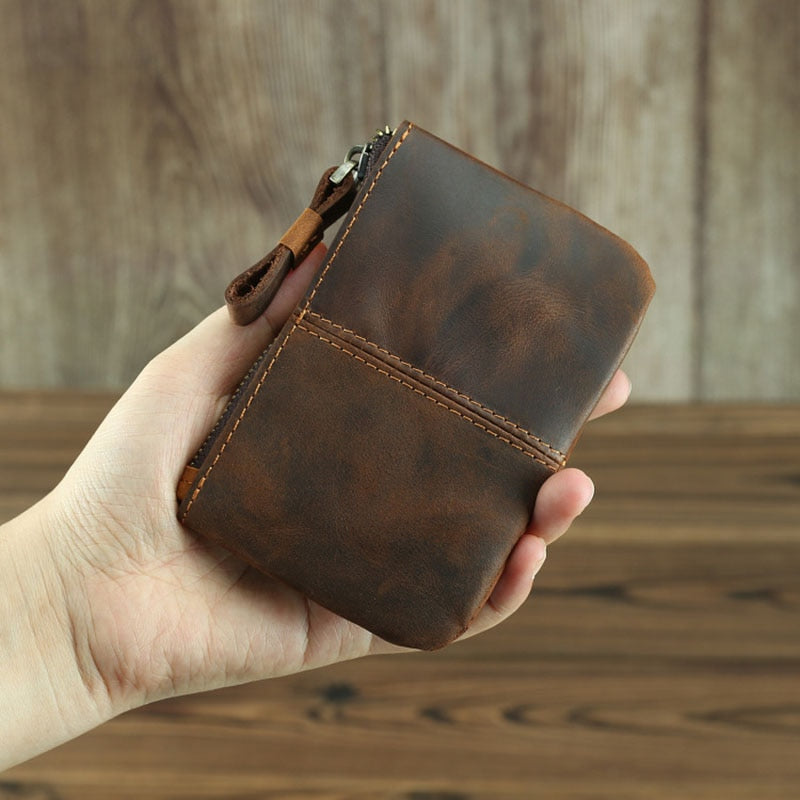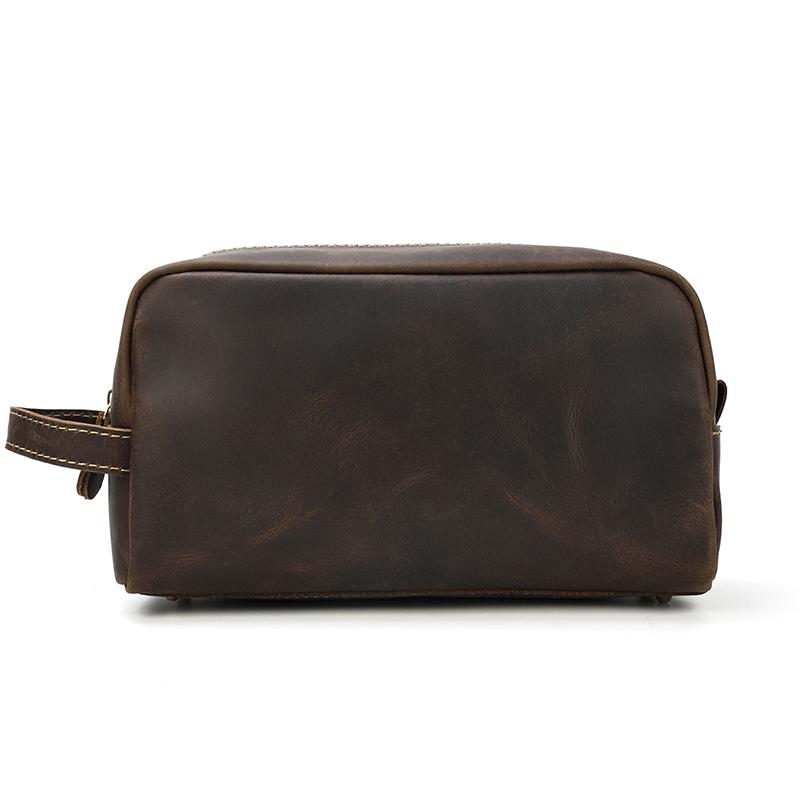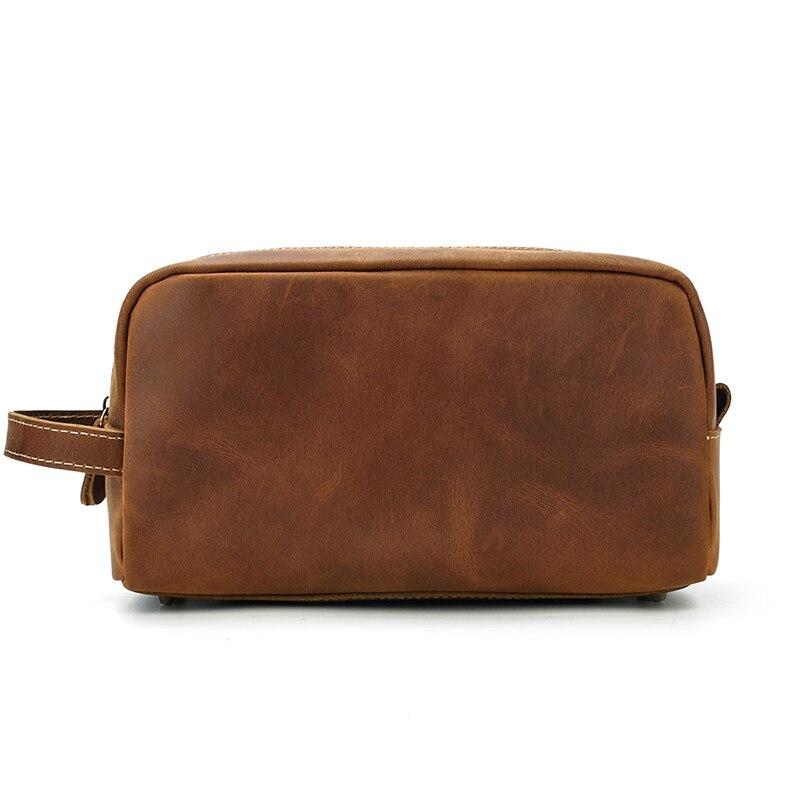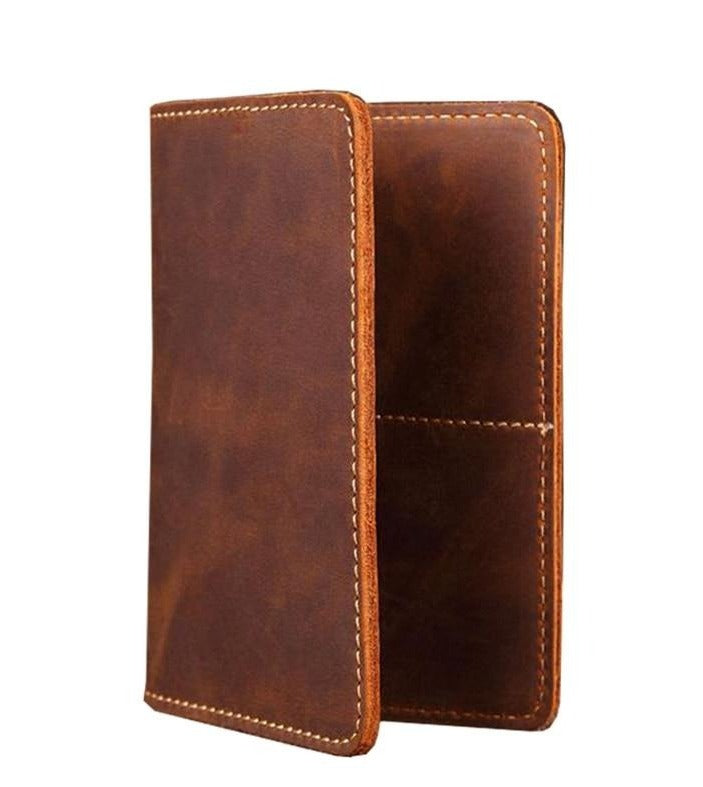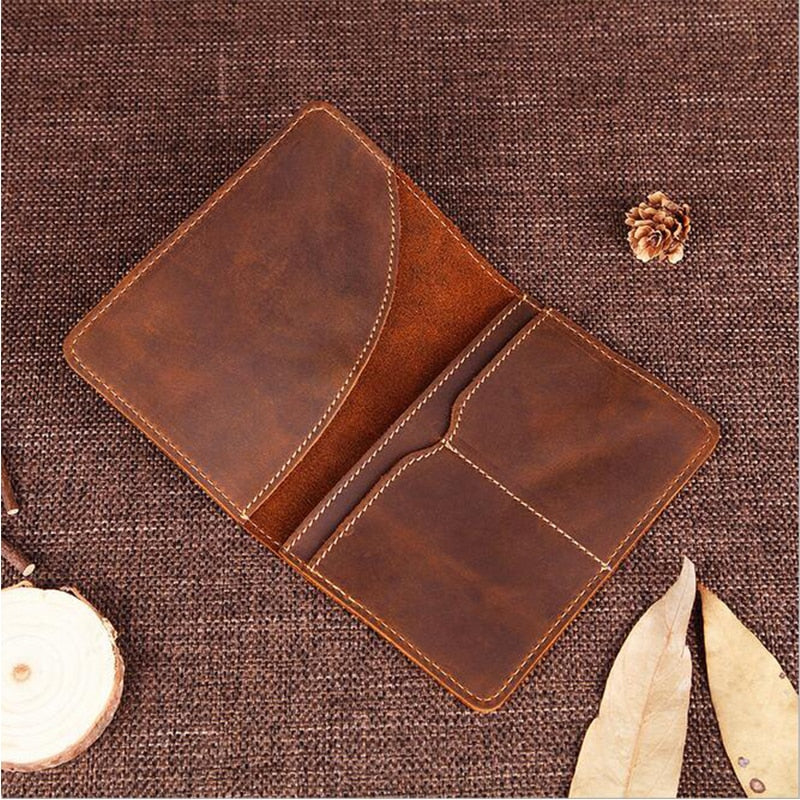The backpack. It is probably the most common bag out there. Everybody uses a backpack. From pre-schoolers going to school to adult hitchhikers going on an adventure. It is a versatile bag for which associates with adventure, freedom, and travel. It is also for function, maybe even dating back to our primitive ancestors. However, there is more to a backpack than just its use. Get to know more about the backpack, its history, and more.
Key Takeaways
-
Backpacks likely originated from our primitive ancestors' instinctive understanding that carrying heavy loads on the back was more efficient than using arms, freeing hands for tools and weapons
-
The modern backpack design began in 1878 with Henry Merriam's "knapsack" featuring metal frame support, initially created exclusively for the US Army
-
Fundamental backpack features include adjustable padded shoulder straps, main compartments, and optional waist/sternum straps for weight distribution and comfort
-
Different backpack types serve specific purposes: everyday use, biking, hiking/trekking, and travel, each with specialized features and sizing
-
When choosing a backpack, prioritize comfort, durability, appropriate size for your torso and needs, activity-specific features, organization capabilities, and quality materials within your budget
Our Expertise in Leather Backpack Craftsmanship
At Steel Horse Leather, we bring decades of master artisan craftsmanship to every leather backpack we create. Our deep understanding of backpack functionality and design comes from years of perfecting traditional leather-working methods, combined with our obsessive attention to the evolution of backpack construction. We don't just study the history of backpacks—we actively participate in their ongoing development by handcrafting each piece using time-tested techniques that honor both the bag's utilitarian roots and its modern innovations.
Our expertise extends beyond mere manufacturing to encompass a holistic understanding of what makes a truly exceptional backpack. We've thoroughly researched and vetted every aspect of our leather sourcing and processing, ensuring that each backpack not only meets the fundamental requirements discussed in this guide—comfort, durability, and functionality—but exceeds them through the superior qualities inherent in genuine, expertly-crafted leather. This comprehensive knowledge of materials, construction techniques, and user needs positions us to provide insights that go far beyond theoretical knowledge, offering practical wisdom gained through years of creating reliable companions for travelers and adventurers worldwide.
The History of Backpacks

Before we talk about the backpack itself, let us first understand its origin. Although there exists little to no evidence, our primitive ancestors were likely to have used the backpack. Or at least the very concept of it. Which is the need to carry something from point A to point B. Many speculate that man instinctively learned that it was easier to carry a heavy object on their back rather than carrying it by their arms. Likewise, it would be convenient for them to carry things on their back. As such this would give them a free hand to carry weapons like spears and clubs. However, these are mere speculations due to lack of evidence.
Early Designs
The earliest ever record of a backpack or at least the concept of using a backpack were in the Alps. Evidence shows an early design of a U-shaped rod with two wooden boards that are held together by a string. Accordingly, its use is mainly to carry firewood. Making it easier to carry. It also increases the firewood that they can carry.
Modern Design Evolution
While our ancestors had the idea, the early design of the backpack that we know and love began around the year 1878. It was thanks to the innovation of Henry Merriam where we get to see the early designs of the modern backpack. Its name was the "knapsack". The knapsack had a metal frame support that would help reduce the burden on the back. The idea however never came to fruition. It was instead made exclusively for the US Army.
Moving forward, it was only around the early 20th century where ideas came to revolutionize the backpack. Many have contributed to the transformation of the design. From inventors to adventurers, these people help make the backpack we know today. One after the other seeking to redesign and improve its function and comfort.
Nowadays, backpacks are both for function and fashion with varying shapes and sizes. Likewise, its design continues to grow.
Fundamentals of Backpacks
While there have been many innovations to the design of the backpack, these variations did not go far from the basic form.
Fundamentally, the modern backpack is frameless. It is either made of cloth, nylon, leather, or waxed canvas. The pack is typically carried on the back. Hence its name the "back" "pack". It has two parallel straps that hang over the shoulders. Since its purpose is to ease the burden by carrying the load on one's back the shoulder strap typically are adjustable and have pads. The pads provide comfort for the wearer even while carrying a heavy load. Likewise, the adjustable straps are meant to move the weight. Whether you want it to be higher or lower on the back. This will help with the burden of carrying a heavy load. Also, almost all designs include a main compartment.
Likewise, the fundamental innovations introduced are also meant to provide comfort and convenience. An example would be the introduction of the waist strap hip belt. The waist strap and sternum strap provides for additional support. It decreases the burden on the shoulder by sharing the weight on the waist. Exterior and interior compartments were also introduced for security and accessibility. Its size also varies depending on the activity.
Types of Backpacks
If you are thinking that there might be a backpack for every activity, chances are you might be correct. The variety of choices might overwhelm someone who knows nothing about backpacks. Worry not, we are here to help by getting you familiar with the different types and sub-types of bags.
For Everyday Use
These are the ones that people use on a daily basis. Be it for school, work, commute, going to the gym, or for any other activity. These are the most common and the most popular. Everyday backpacks include the basic daypack, the rucksack, and drawstring backpacks. The Anti theft backpack and laptop backpack are also for everyday use. Likewise, a duffel backpack and a tote backpack are also included. They are simply either a tote/duffel with shoulder straps and typically are a frameless backpack.
For Biking
These are for biking. There are only two types. Hydration backpacks and biking gear backpacks. These backpacks are pretty straightforward as their names suggest. One offers hands-free hydration while riding while the other offers organizational compartments for tools and other cycling gear. The gear backpack is larger than the other. Likewise, it may also have a hydration bladder. A 2 in 1 bag of sorts.
For Hiking or Trekking
Likewise, these are designed for people who often go hiking or trekking. The hiking backpack can vary in size and structure. From small to large, framed, or frameless. The hiking pack is built to carry a lot of things but is still lightweight and durable.
For Travel
While most if not all backpacks are for travel these travel backpack are more innovative than others when it comes to travel. For example, is the "backpacking backpack". Large backpacks for people who go on long trips, such as cross country or a Euro Trip. There are also "carry on backpacks". They are made to fit inside overhead bins or rest on the floor during a quick trip. There also backpacks that are TSA friendly and there are those backpacks with wheels. Furthermore, if it is for travel you could consider a duffel bag.
Choosing the Right Backpack: Key Factors to Consider
Choosing a backpack is a personal decision, and while we can't tell you which one to buy, we can provide some essential tips to help you make an informed choice.
| Factor | Description | Why It Matters & What to Look For |
|---|---|---|
| Comfort | How the bag feels on your body. | This is the most important factor. If a bag is uncomfortable, you shouldn't buy it. Check for padded straps and a padded back. Also, see if the bag has a hip belt, which can help distribute weight. |
| Durability and Material | The quality of the bag's construction and materials. | Your bag should be made from high-quality materials like nylon, leather, or waxed canvas to ensure it lasts a long time. Check the stitching and the thread material, as these small details are crucial for durability, especially for carrying heavier loads. |
| Content Protection | The bag's ability to protect the items inside. | This is important, especially for electronics. Consider a water-resistant bag for outdoor use. Look for a padded laptop compartment or sleeve and specific pockets for other electronics to keep them safe. |
| Size | The bag's dimensions relative to your body and what you're carrying. | Find a size that is proportional to your body and can fit all the items you need to carry. Bags come in various sizes: extra small/small for torsos up to 18", medium/regular for 18"-20", and large for 20" and above. |
| Activity | The specific purpose for which you'll use the bag. | The backpack must be suitable for its intended activity. For example, don't use an oversized hiking bag for a weekend trip, or a hydration backpack to carry a laptop. |
| Organization | How the bag's pockets and compartments are arranged. | Good organization allows you to store your belongings without compromising on accessibility. Look for a backpack with multiple pockets, compartments, or an elastic side pocket to keep your items tidy and easy to reach. |
| Budget | The amount you're willing to spend on the bag. | The price should reflect the quality of the materials. Don't compromise quality for a lower price, but also don't choose a bag that is far outside your budget. Find a good balance between quality and cost. |
Choosing a backpack is a matter of preference. We cannot dictate what backpack you should buy. We can however at the very least give you a few tips to help you decide.
Comfort
The most important factor. It is simple. If you wear it and it makes you uncomfortable then you should not buy it. Remember that years of innovating is not only for utility and function. It is also for comfort. Check the straps and the back for padding. Make sure to check if you are l with hip belts as well.
Durability and Material
Your bag should be made with high-quality material such as nylon, leather, or waxed canvas. The better the material the longer it will last. Strength also matters because of the demand to carry a heavier load. Likewise, be sure to check the stitching and the thread material. These small things will be crucial to the durability of your backpack.
Content Protection
While it is not really a necessity, it is still important. You may want to consider buying a water-resistant bag whenever you go outdoors. You may also want to consider bags with a padded laptop compartment or a laptop sleeve and pockets for other electronics.
Size
Sometimes size matters. Find the right size the fits you. Many sources however suggest that the "right size" is one that is proportional to your body. It must also fit all the items you need to carry. Bag size range from extra small and small for torsos up to 18", medium and regular for torsos 18"-20", and large for those 20" and above.
Activity
Of course, you will need to buy a backpack that will fit the activity. You would not want to carry an oversized hiking bag to a quick weekend getaway, nor store a laptop inside a hydration backpack.
Organization
It is important to consider the organizational capabilities of the perfect backpack. Such that you may store your belongings without compromising on accessibility. You might also want to prefer a large backpack with multiple pockets or compartments. Or prefer those with an elastic side pocket.
Budget
Take note, that the quality of the materials should reflect the price. Do not compromise price over quality. However, do not reach too far that the bag is out of your budget. Find the right bag that is within your budget while still good quality materials.
If you are looking for a leather backpack come visit us as our shop.
Frequently Asked Questions
What's The Difference Between A Backpack And A Rucksack?
While the terms are often used interchangeably, rucksacks traditionally refer to larger, more rugged bags designed for outdoor activities and military use. These bags often feature either an internal frame or external frame design for better weight distribution and carrying capacity. Modern usage has blurred these distinctions, with both terms generally describing bags carried on the back with shoulder straps, often equipped with additional features like a sternum strap for enhanced stability.
How Do I Determine The Right Backpack Size For My Body?
Backpack sizing is based on your torso length, not your height or body weight. Measure from the base of your neck to the top of your hip bones. Extra small/small fits torsos up to 18", medium/regular fits 18"-20", and large fits 20" and above. The backpack should also accommodate all items you need to carry, whether it's a travel backpack for overnight bags, school backpacks with a laptop sleeve, or internal frame backpacks designed for multiday trips. Features like adjustable straps and load-lifter straps help ensure proper fit and promote healthy back habits.
Are Expensive Backpacks Really Worth The Investment?
Higher-quality backpacks typically use better materials like premium leather, nylon, or water-resistant fabric, feature superior stitching, and offer better comfort and durability through elements like a padded back. While you shouldn't exceed your budget, investing in quality materials often provides better long-term value through increased longevity and performance. Premium models may include specialized features such as hydration pockets, mesh pockets, RFID blocking pocket, USB port, or even solar panels for tech-savvy users. External frame backpack designs and hydration backpacks with hydration reservoir systems are examples of specialized gear that command higher prices due to their advanced functionality.
Can I Use A Hiking Backpack For Everyday Activities?
While technically possible, hiking backpack models are typically larger and designed for outdoor use, making them impractical for daily activities like commuting or school. These packs often feature specialized elements like a daisy chain for gear attachment, crampon patch for mountaineering equipment, or compartments for fire shelters and backcountry skiing gear. It's better to choose activity-specific backpacks that match your intended use for optimal functionality and appearance. For daily use, consider school backpacks with laptop sleeve, adaptive backpacks for special needs, or even a rolling backpack for heavy loads. Some users prefer a carryall duffel style for versatility.
What Makes A Backpack Water-Resistant And Do I Need This Feature?
Water-resistant backpacks use treated materials, waterproof coating, and sealed seams to repel moisture. This feature is particularly valuable if you frequently travel outdoors, commute in various weather conditions, or carry electronics that need protection from rain or spills. Beyond weather protection, consider additional features based on your needs: hydration packs with water bottle storage or hydration reservoir for outdoor activities, military gear specifications for police tactical units, or pack frame systems that distribute weight effectively across your back and shoulders.
Conclusion
The backpack's journey from ancient necessity to modern essential reflects humanity's continuous drive to improve functionality and comfort in our daily lives. Understanding the rich history, fundamental design principles, and diverse types available empowers you to make informed decisions when selecting your next backpack. Whether you need a sleek laptop bag for professional use, a rugged hiking pack for outdoor adventures, or a versatile everyday carrier, the key lies in matching the backpack's features to your specific needs while prioritizing comfort, durability, and quality materials. As backpack design continues to evolve, combining both function and fashion, this timeless accessory remains an indispensable companion for life's many journeys.





